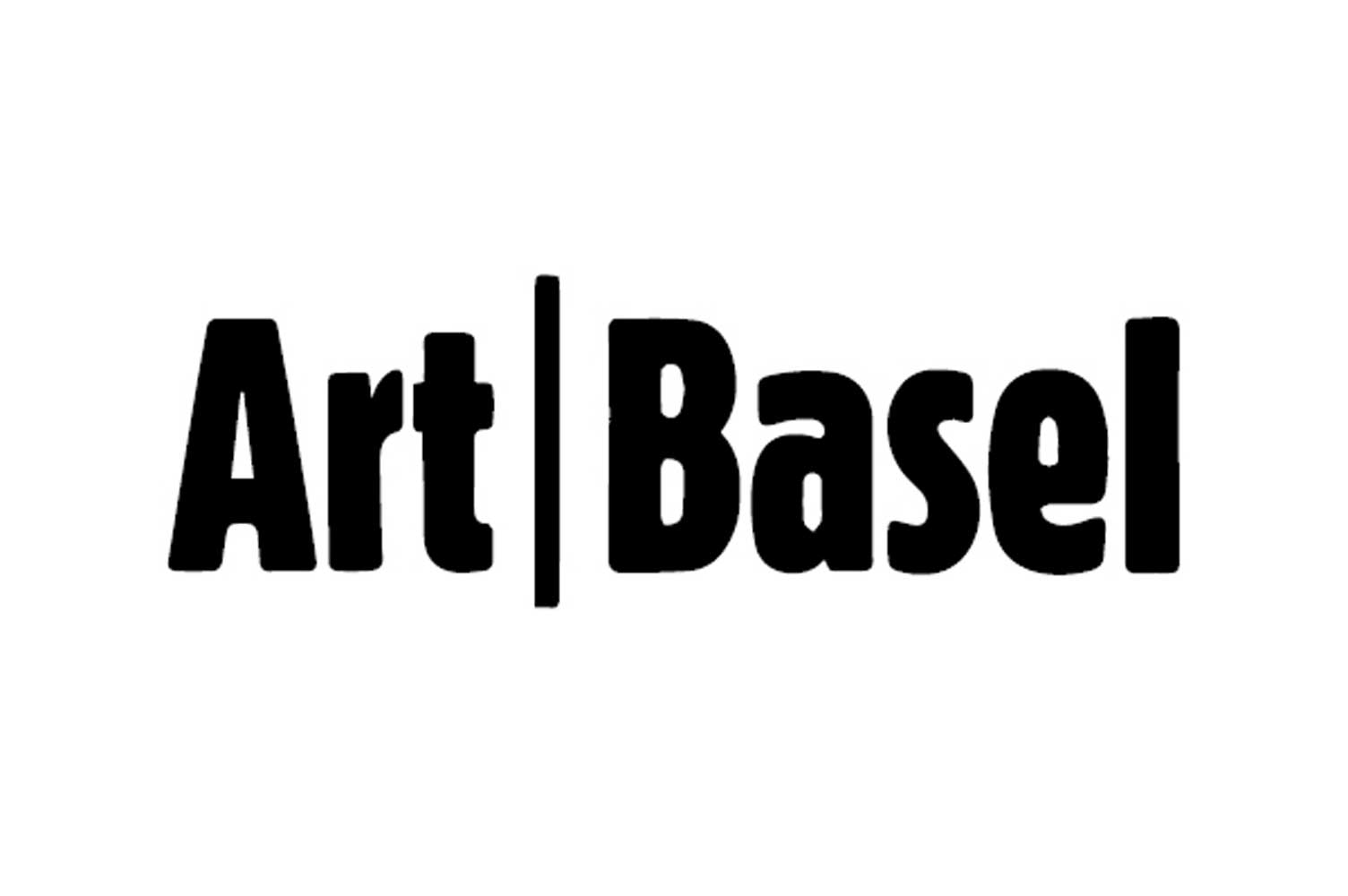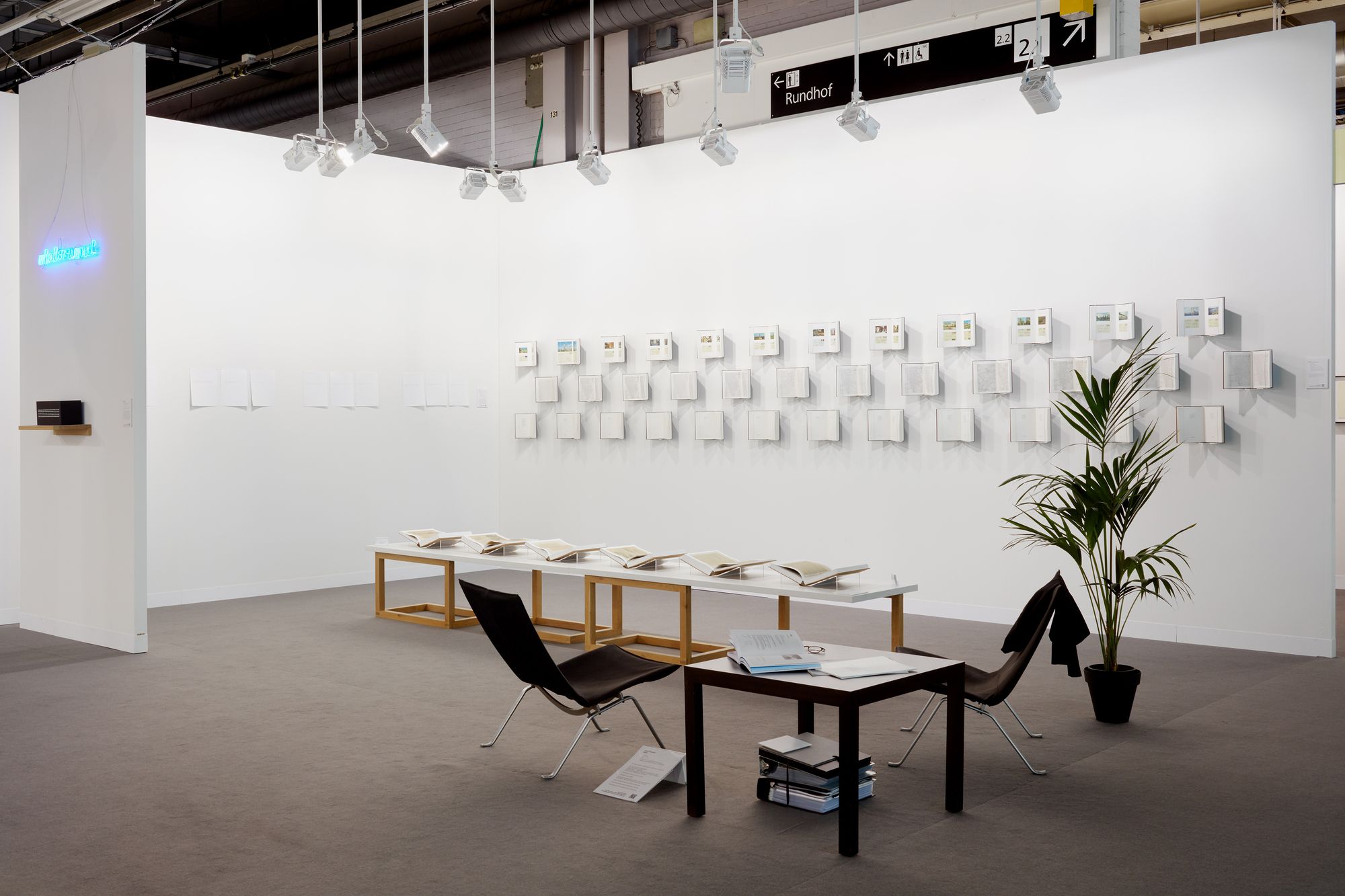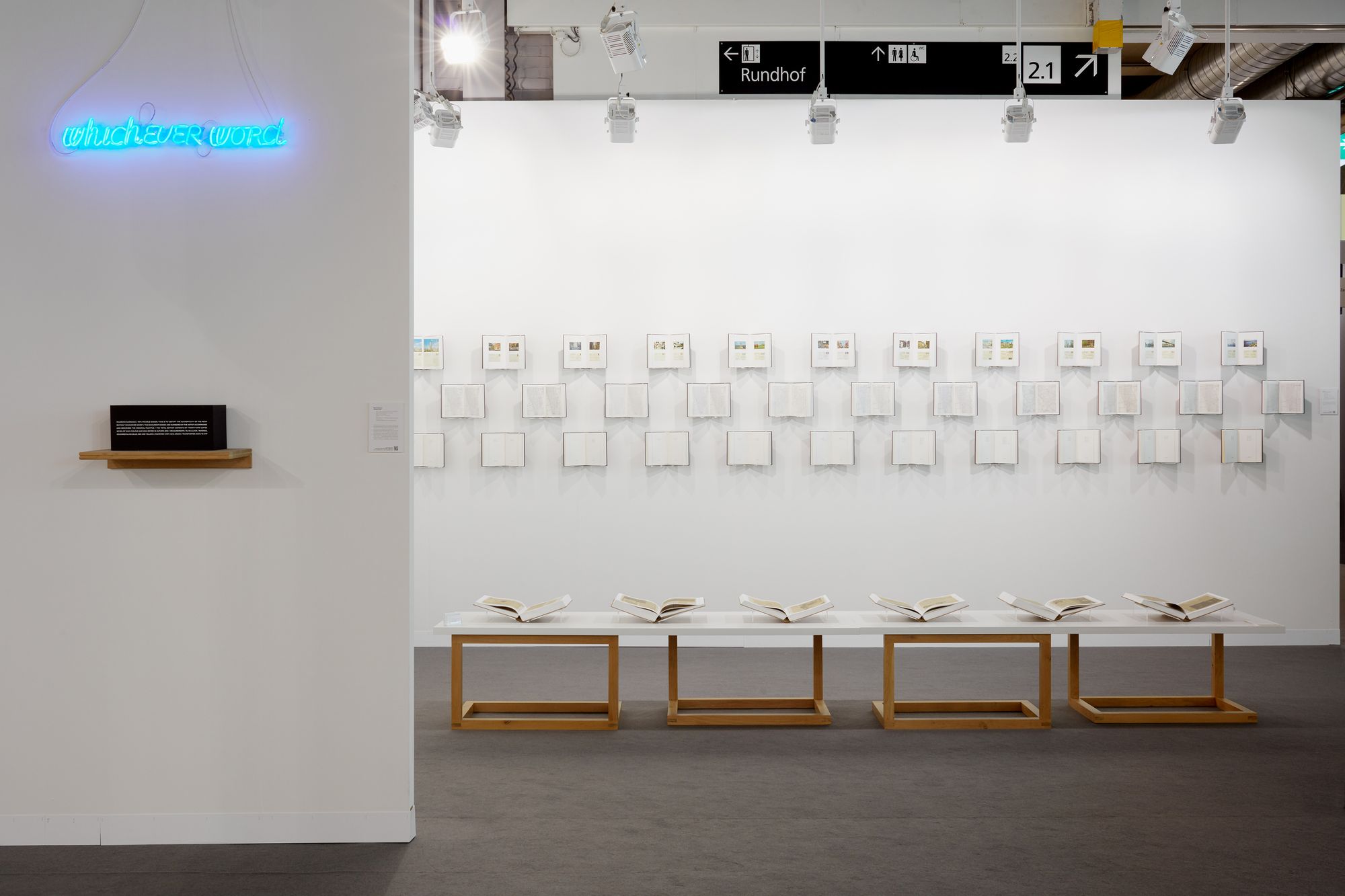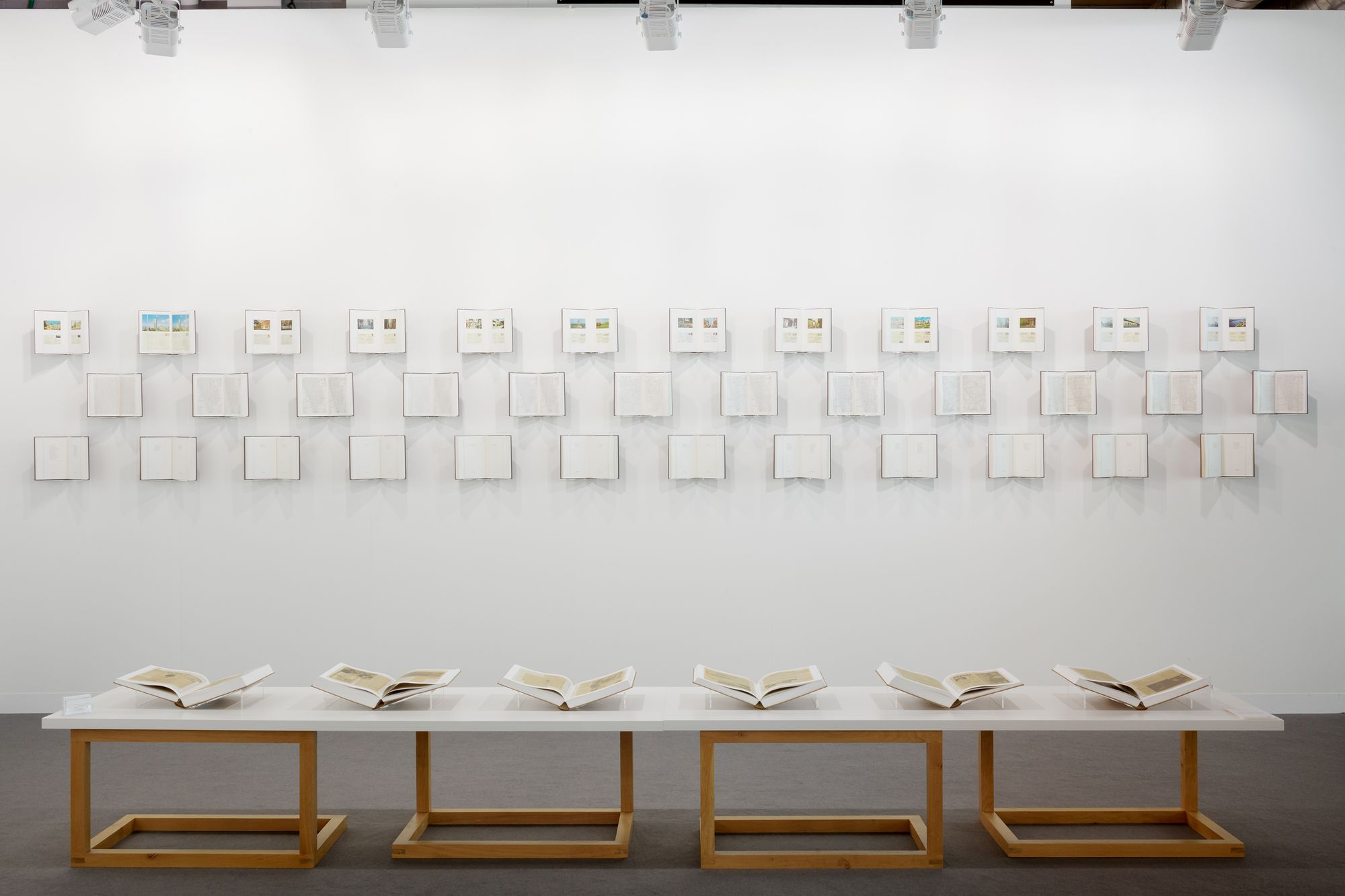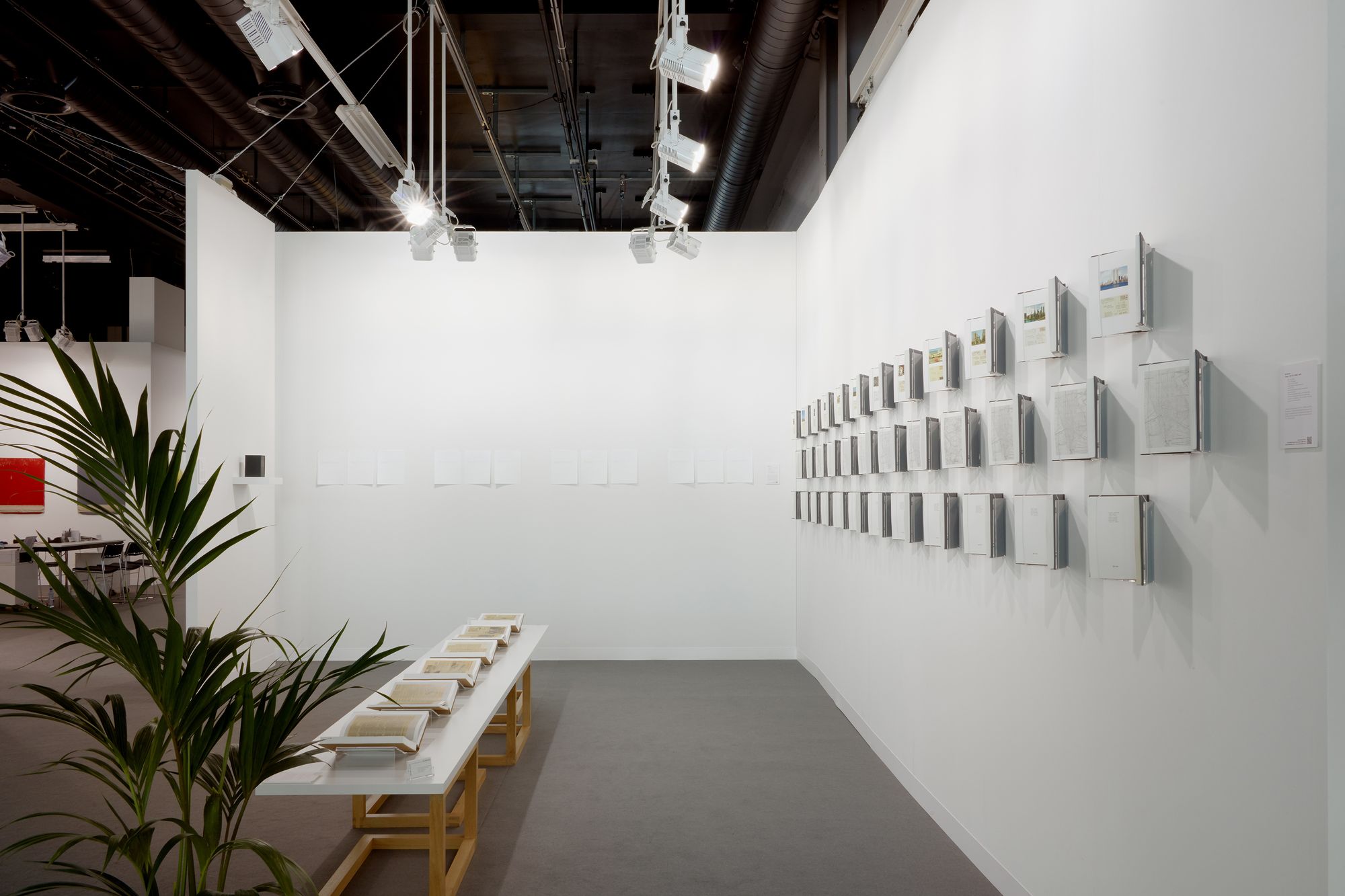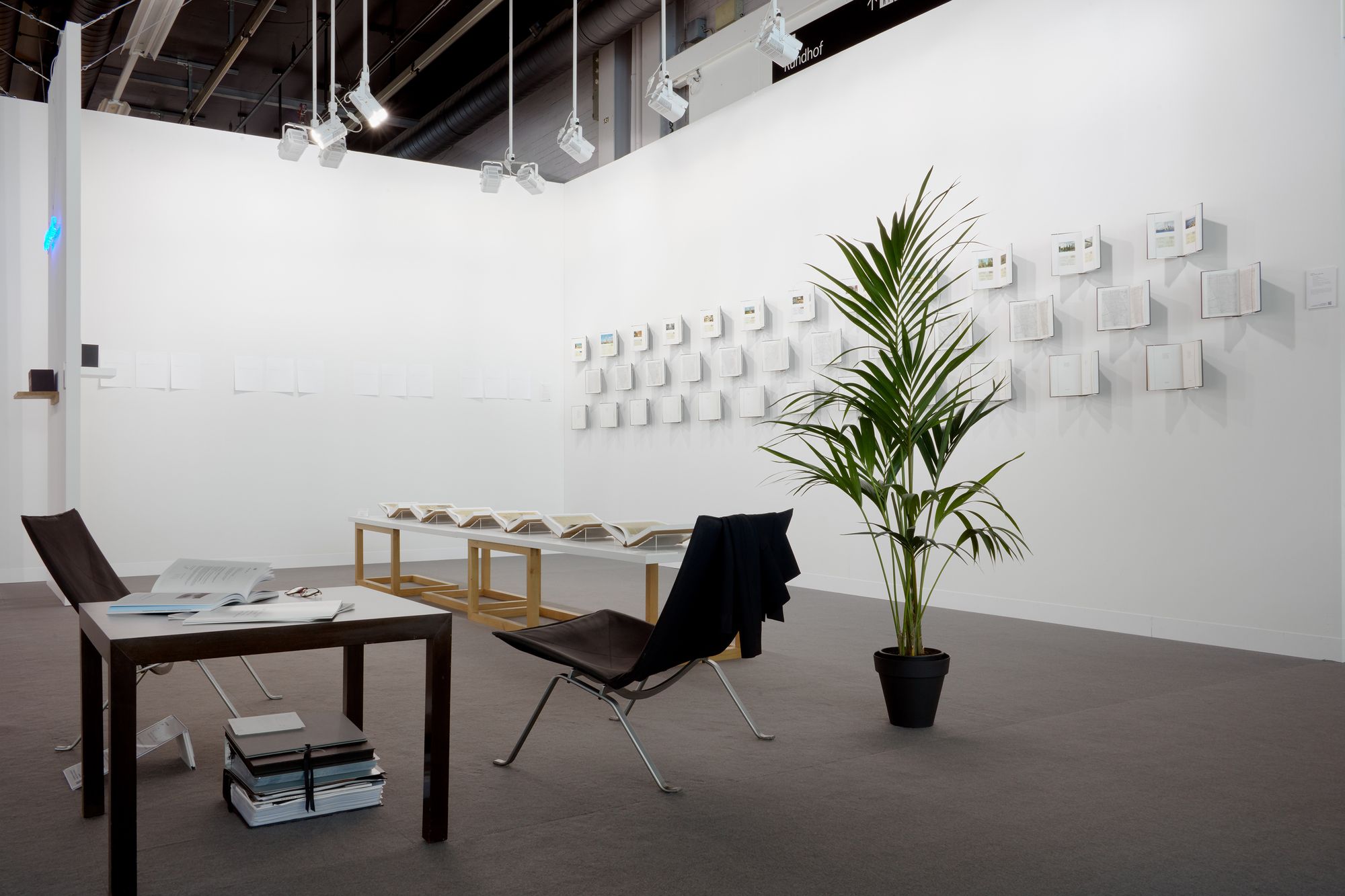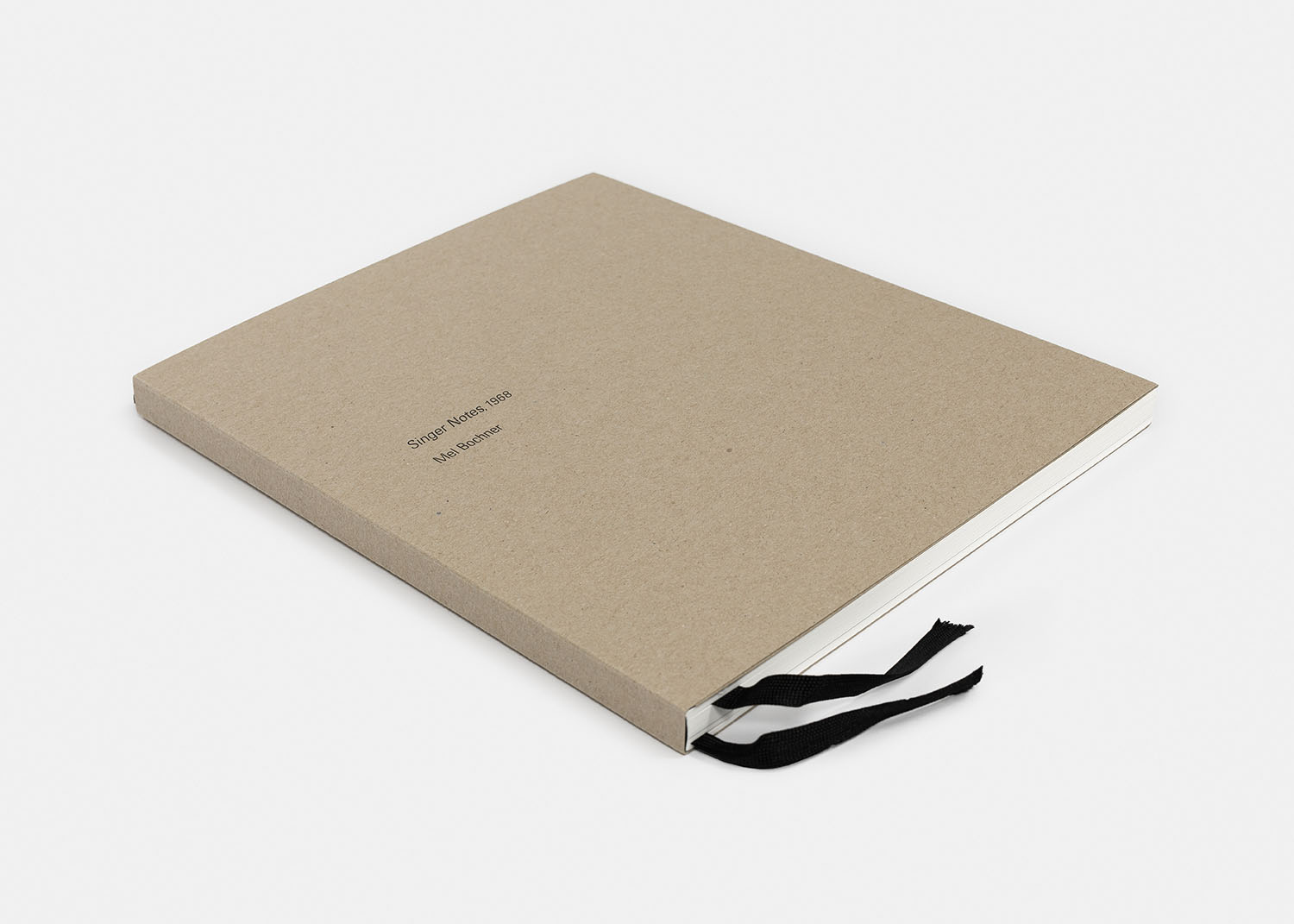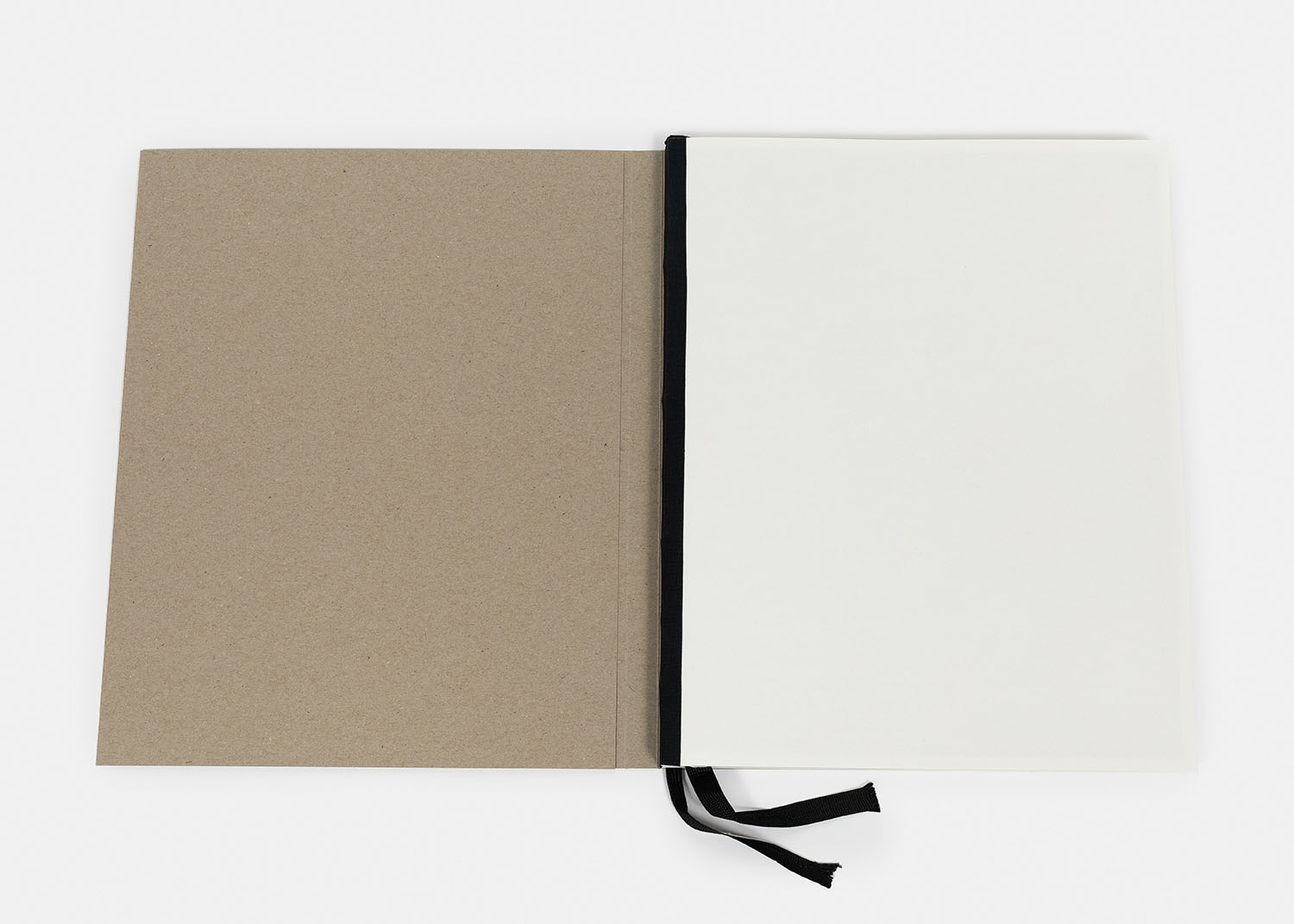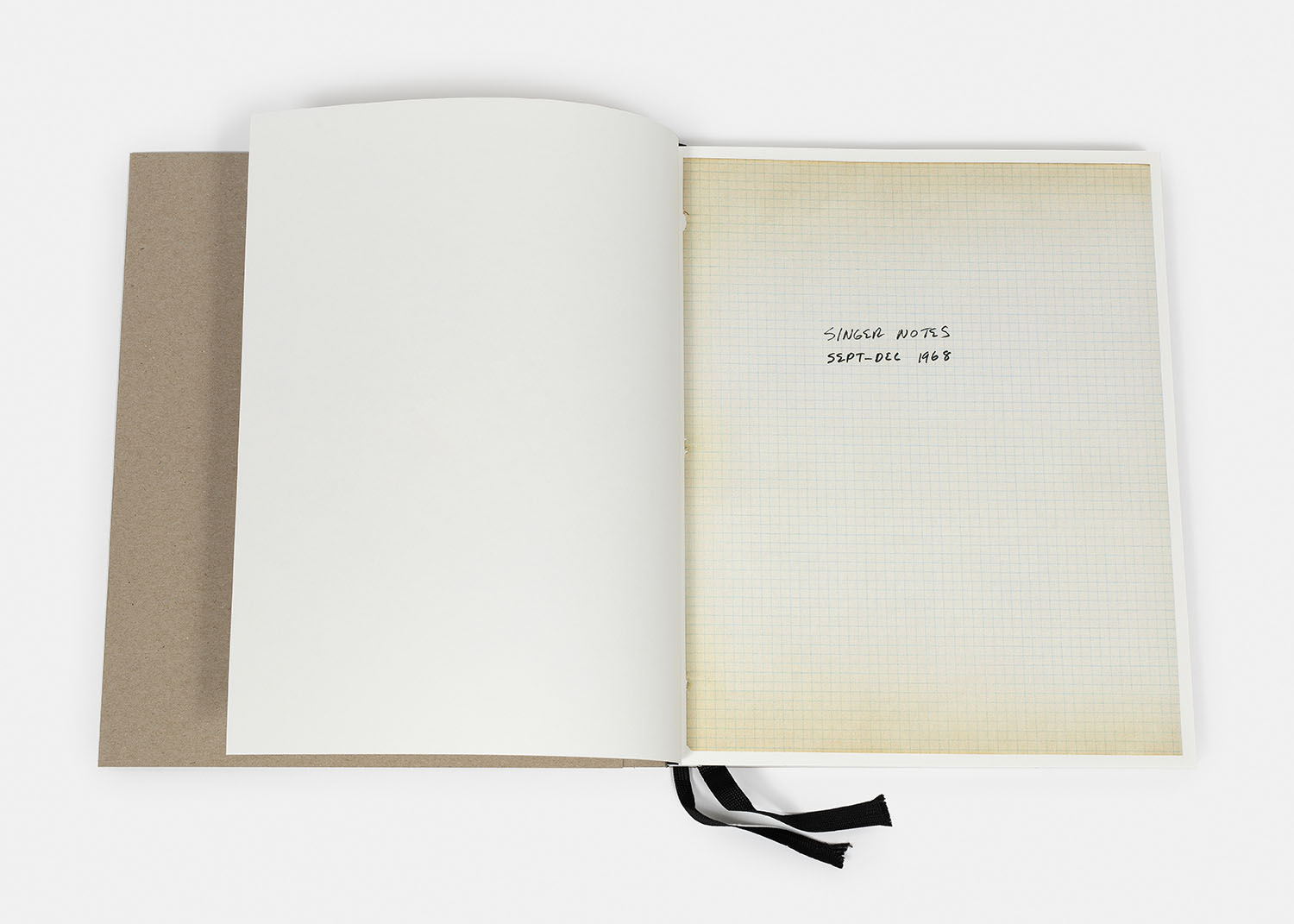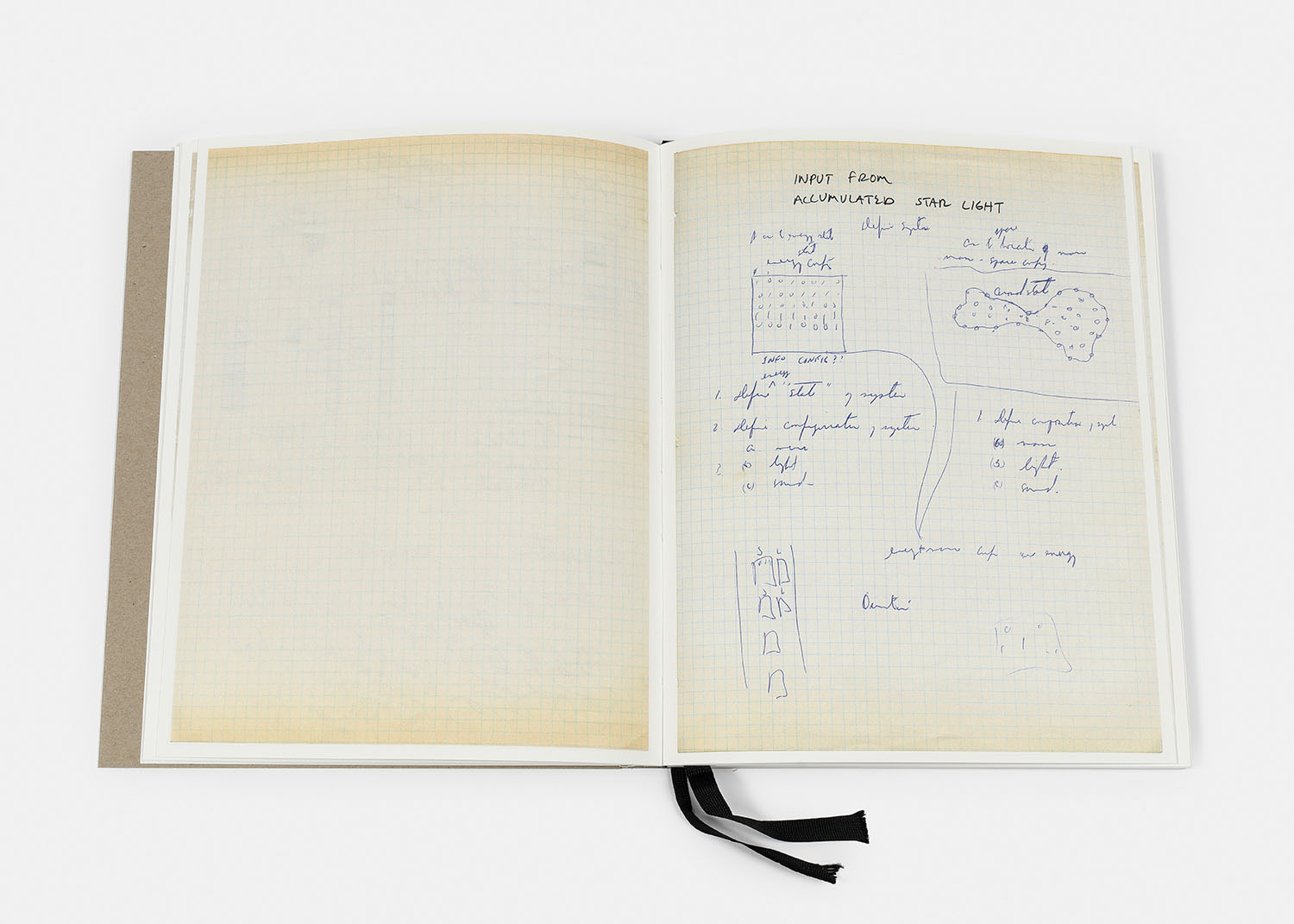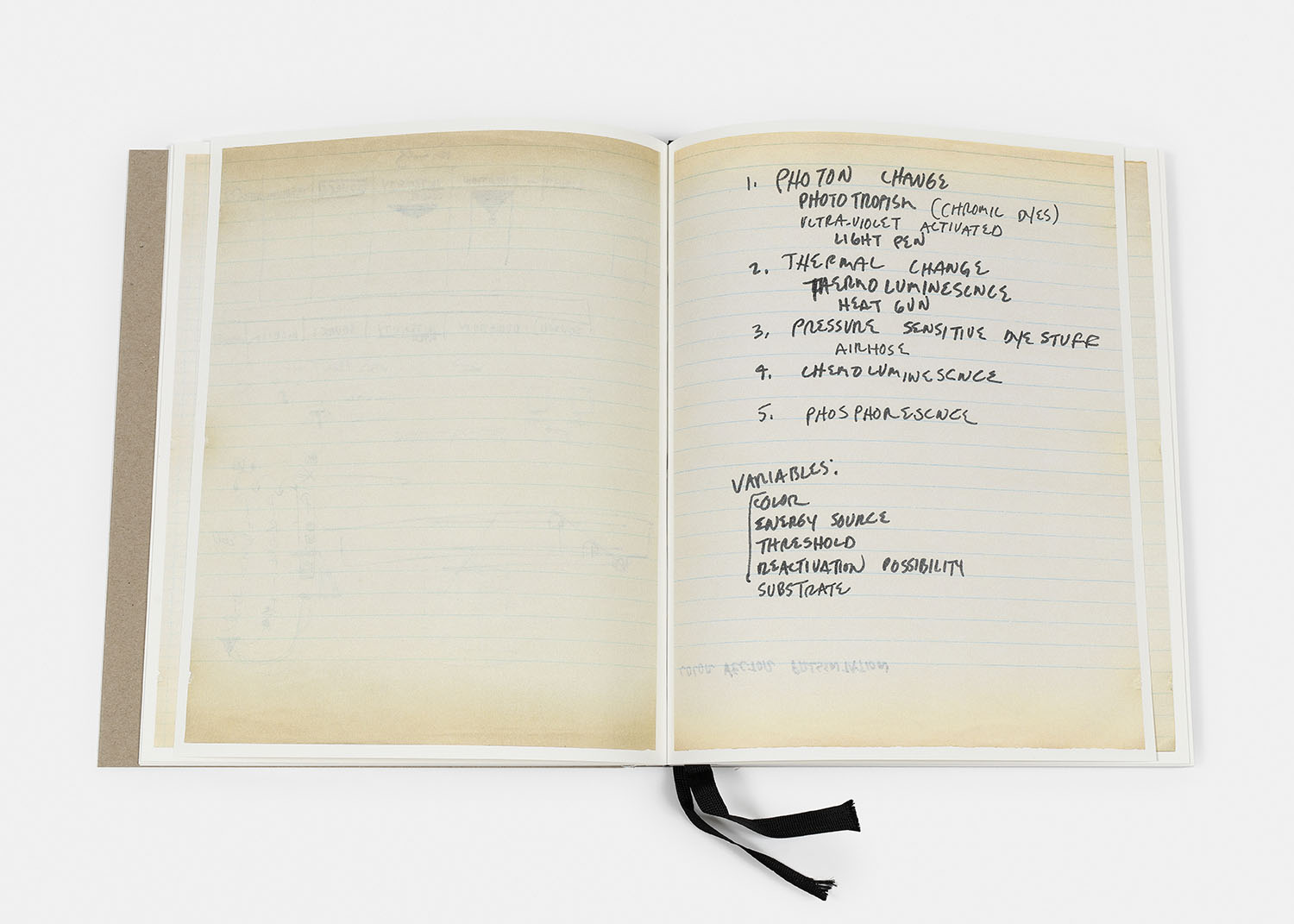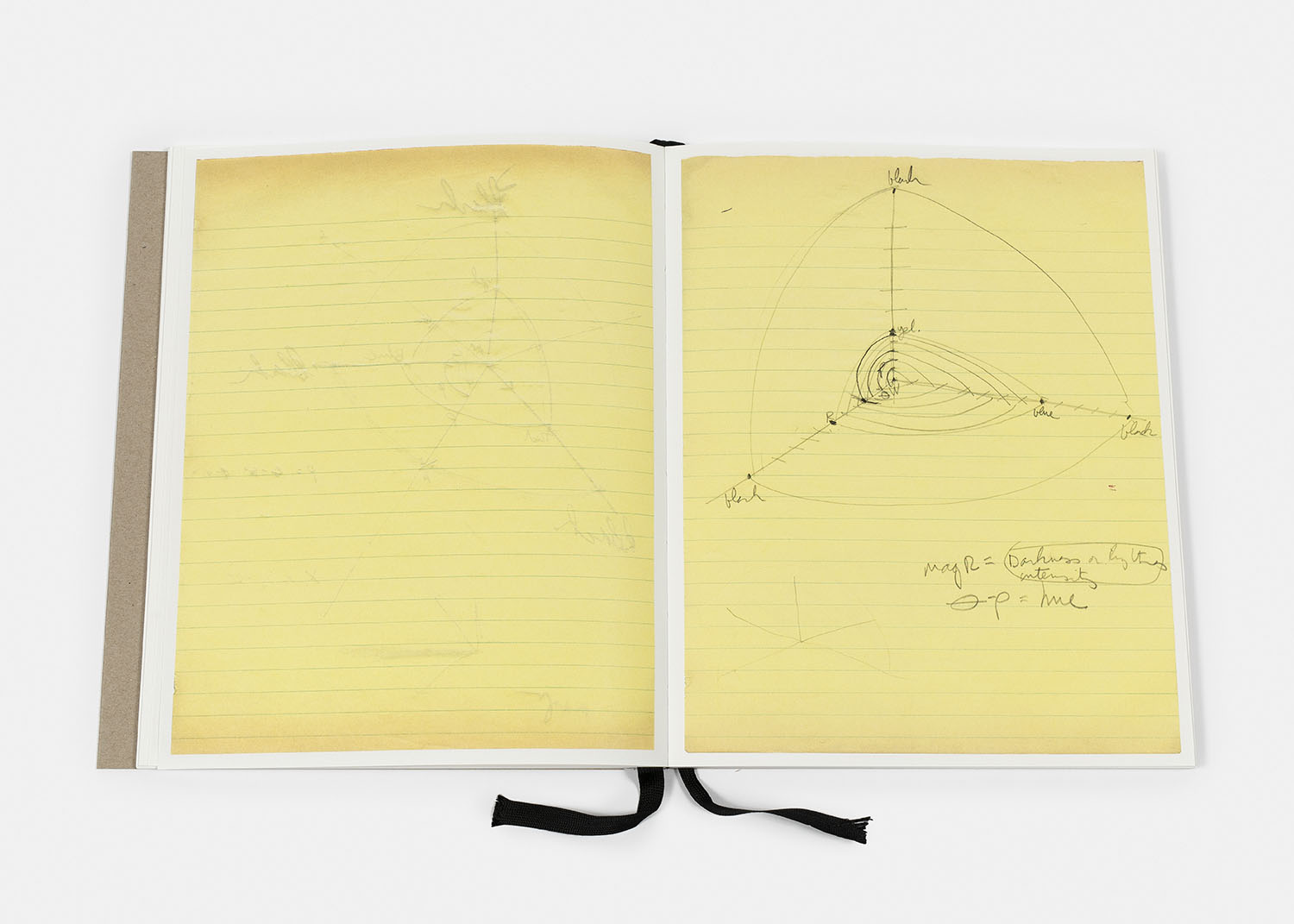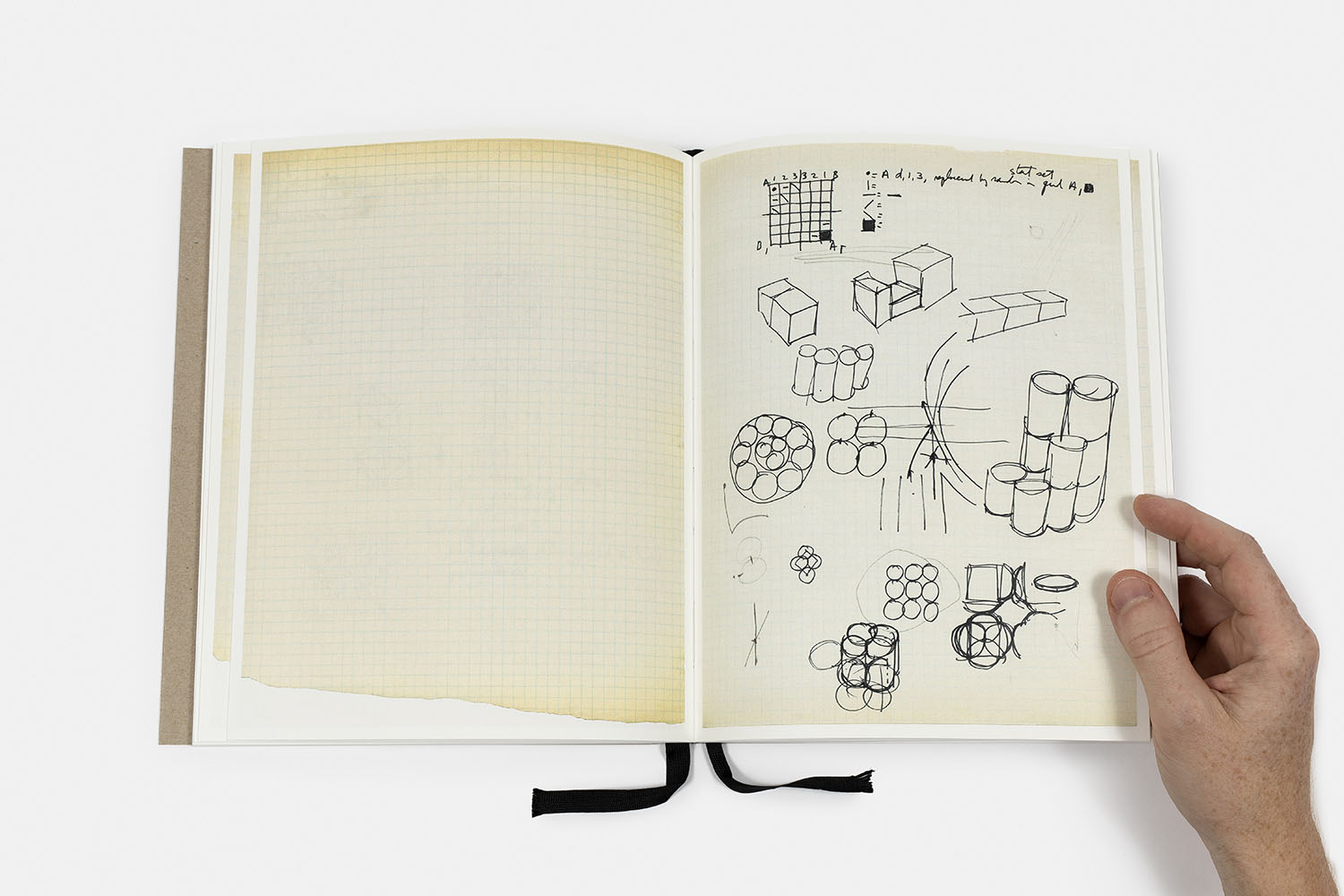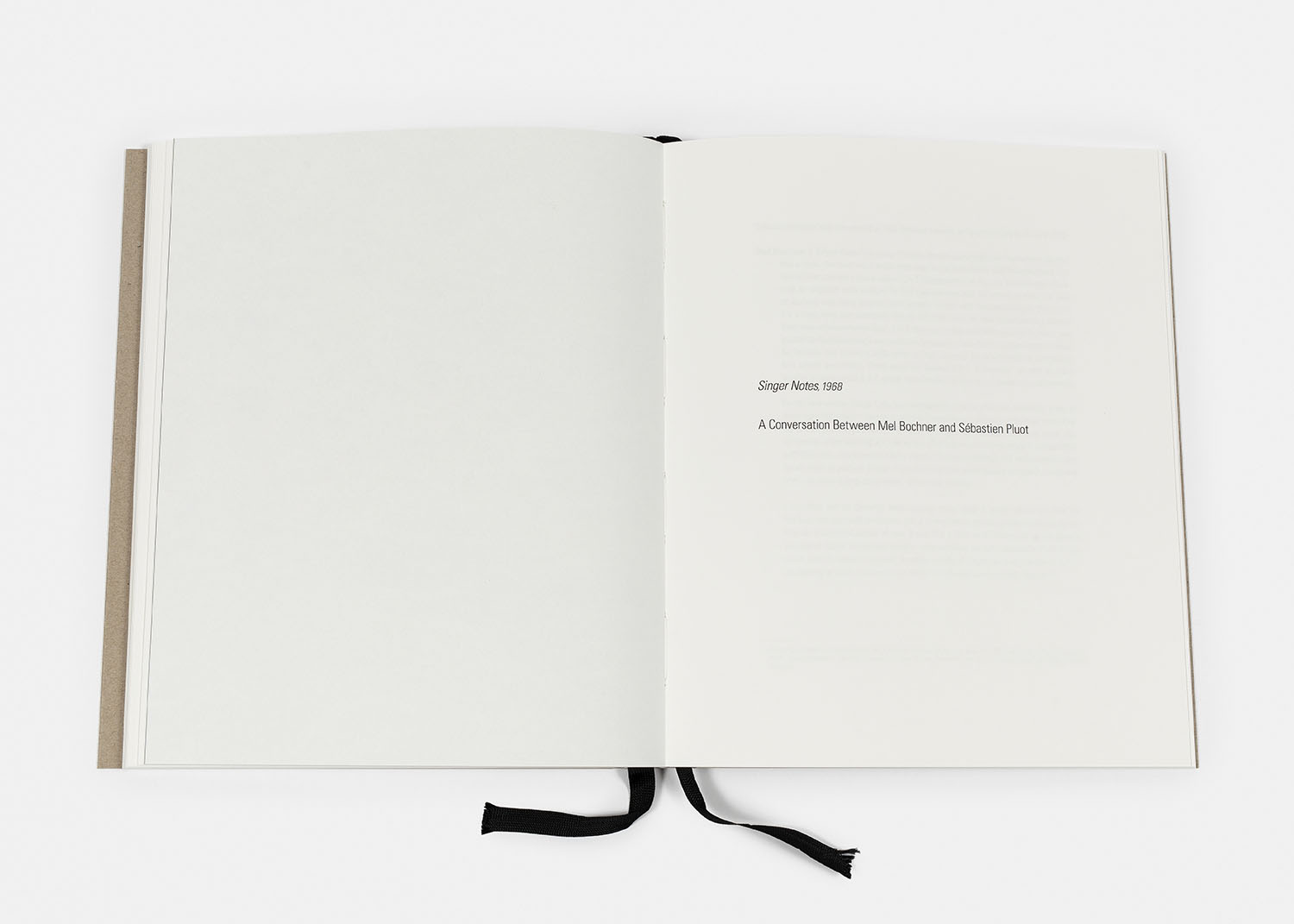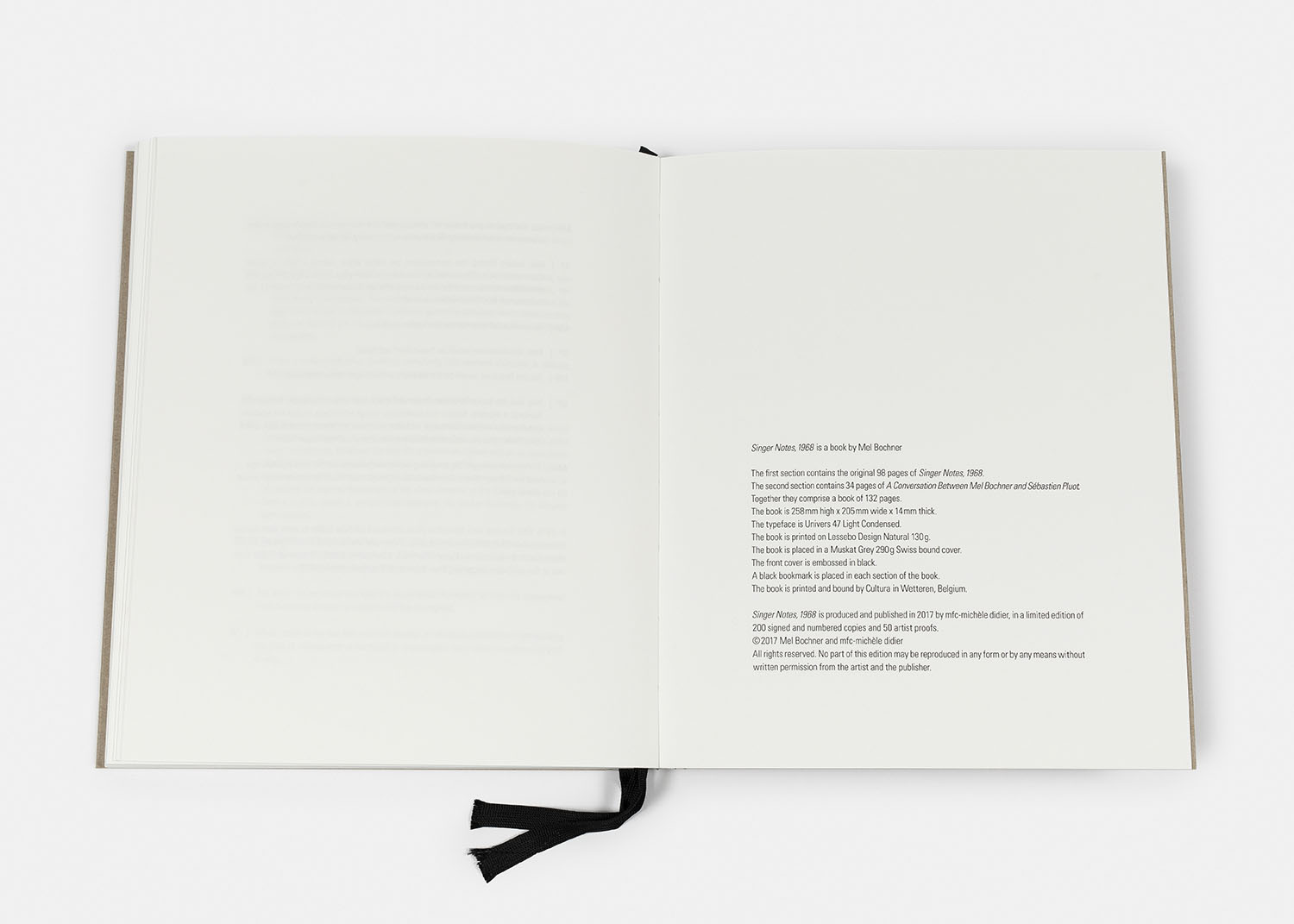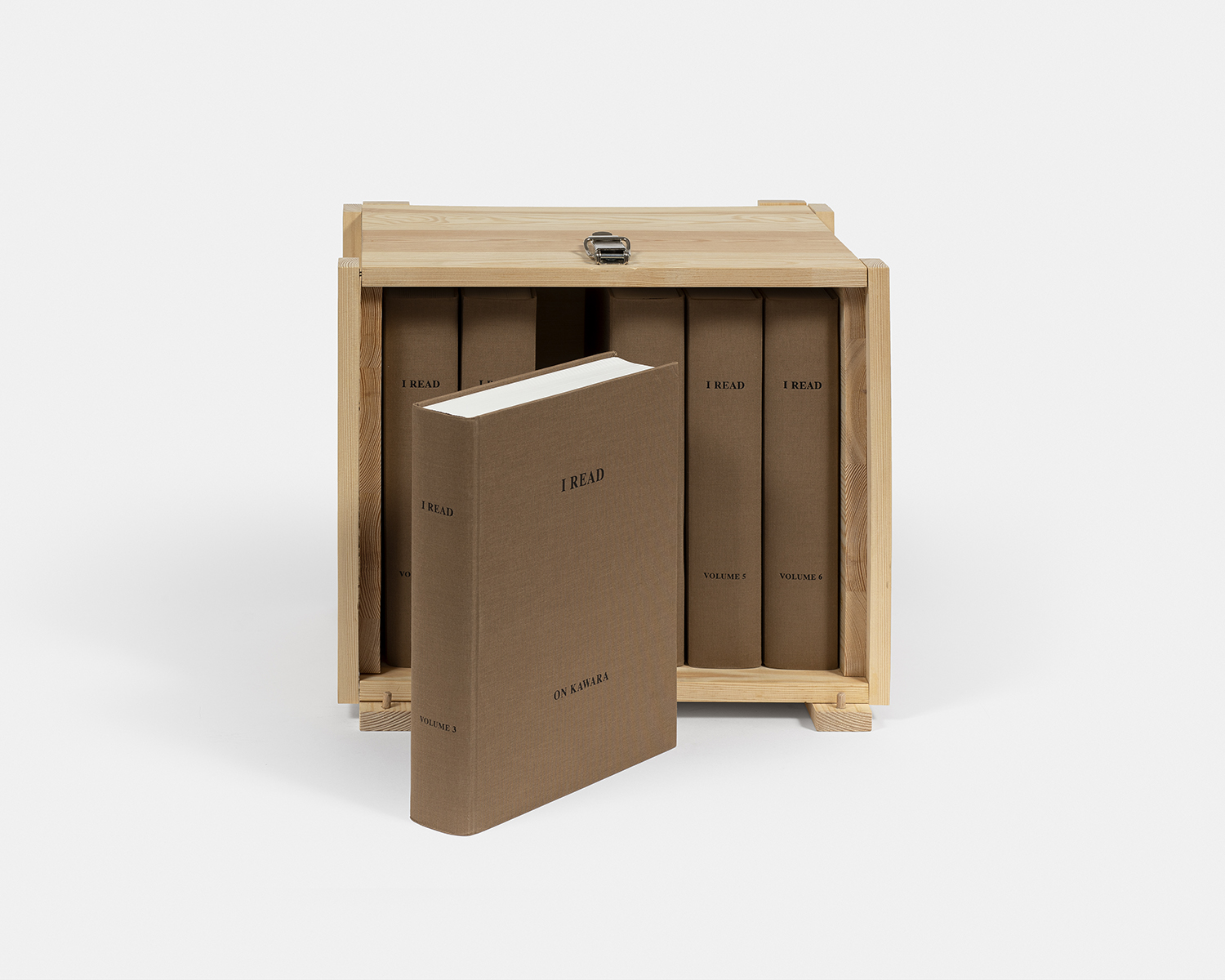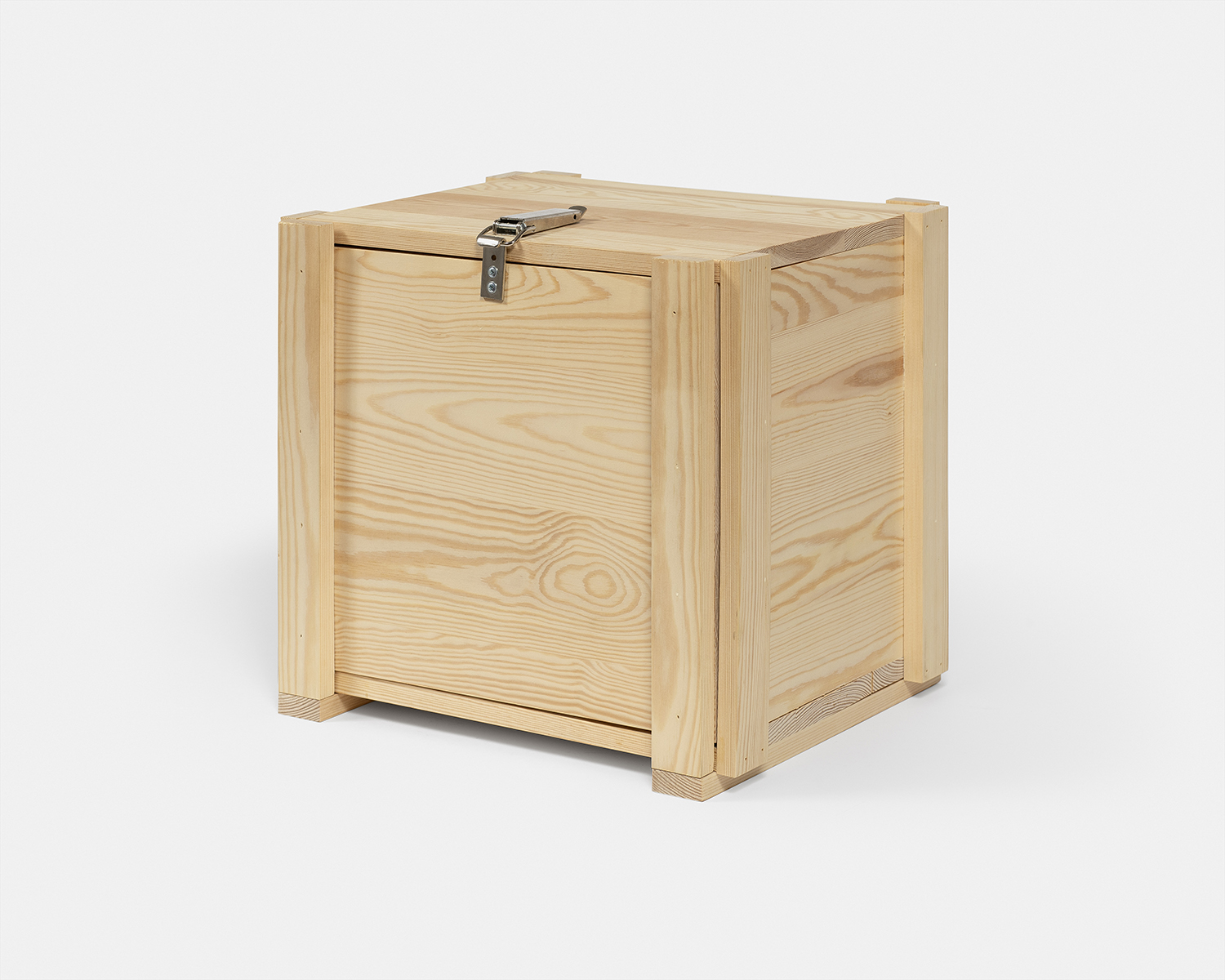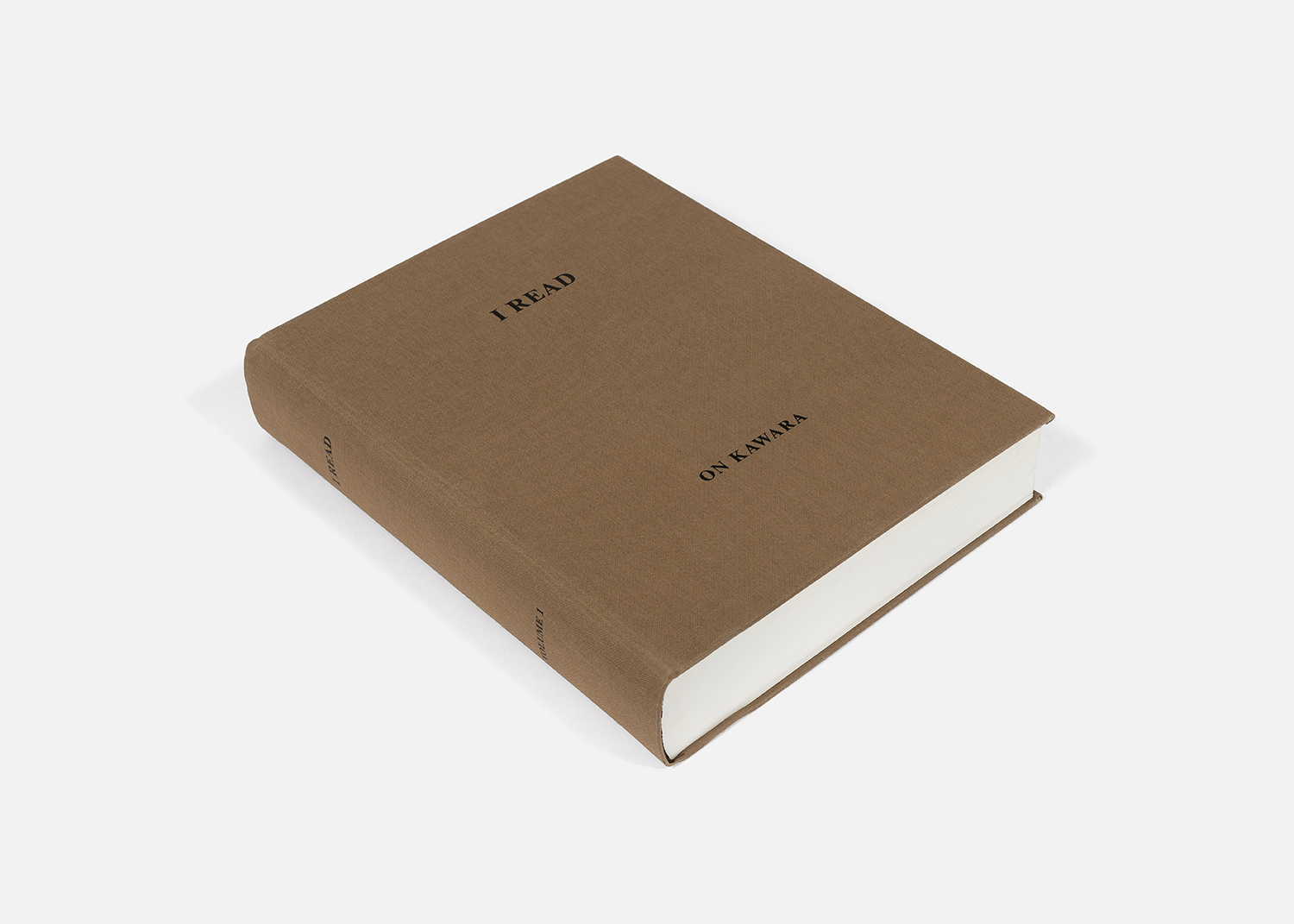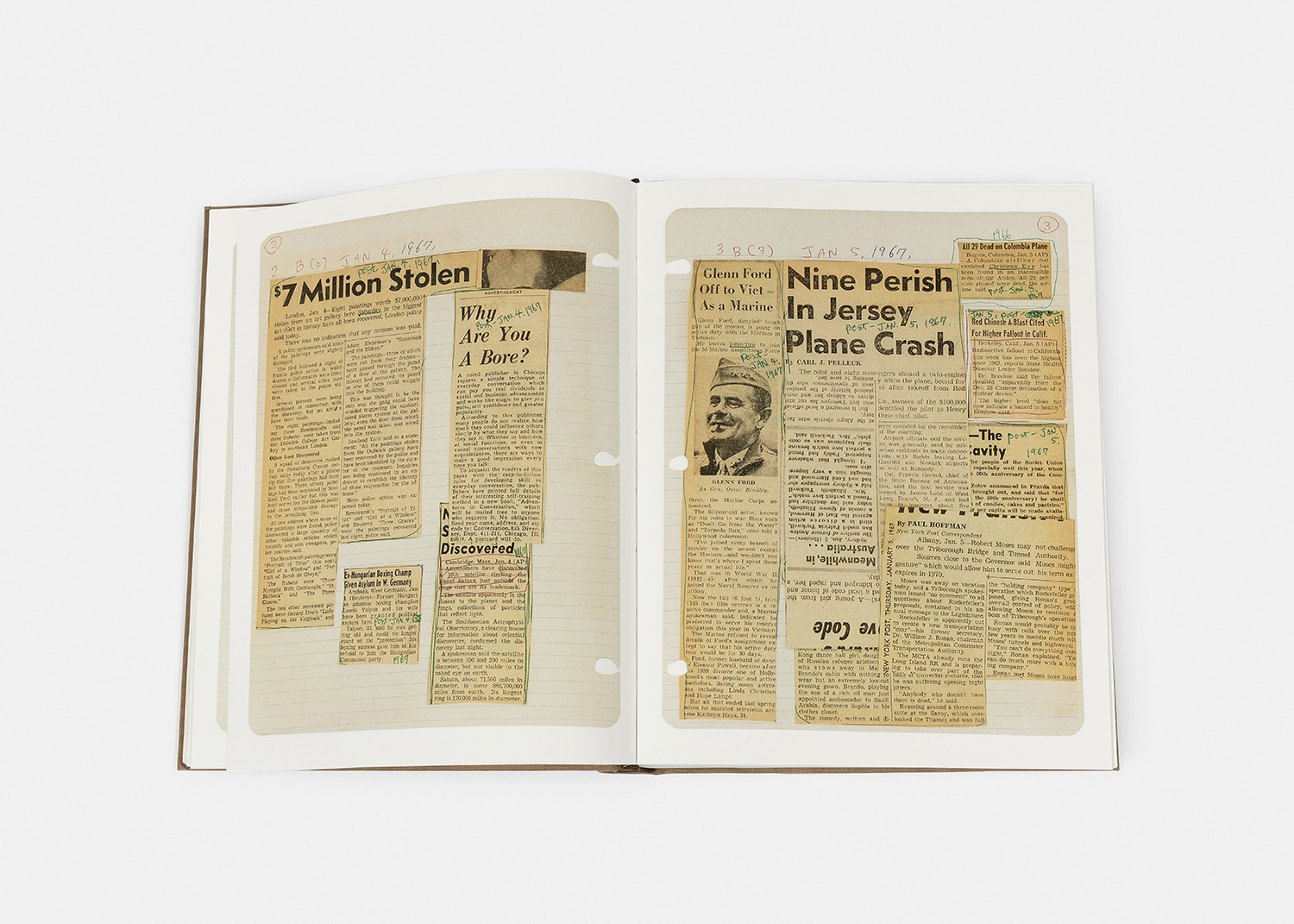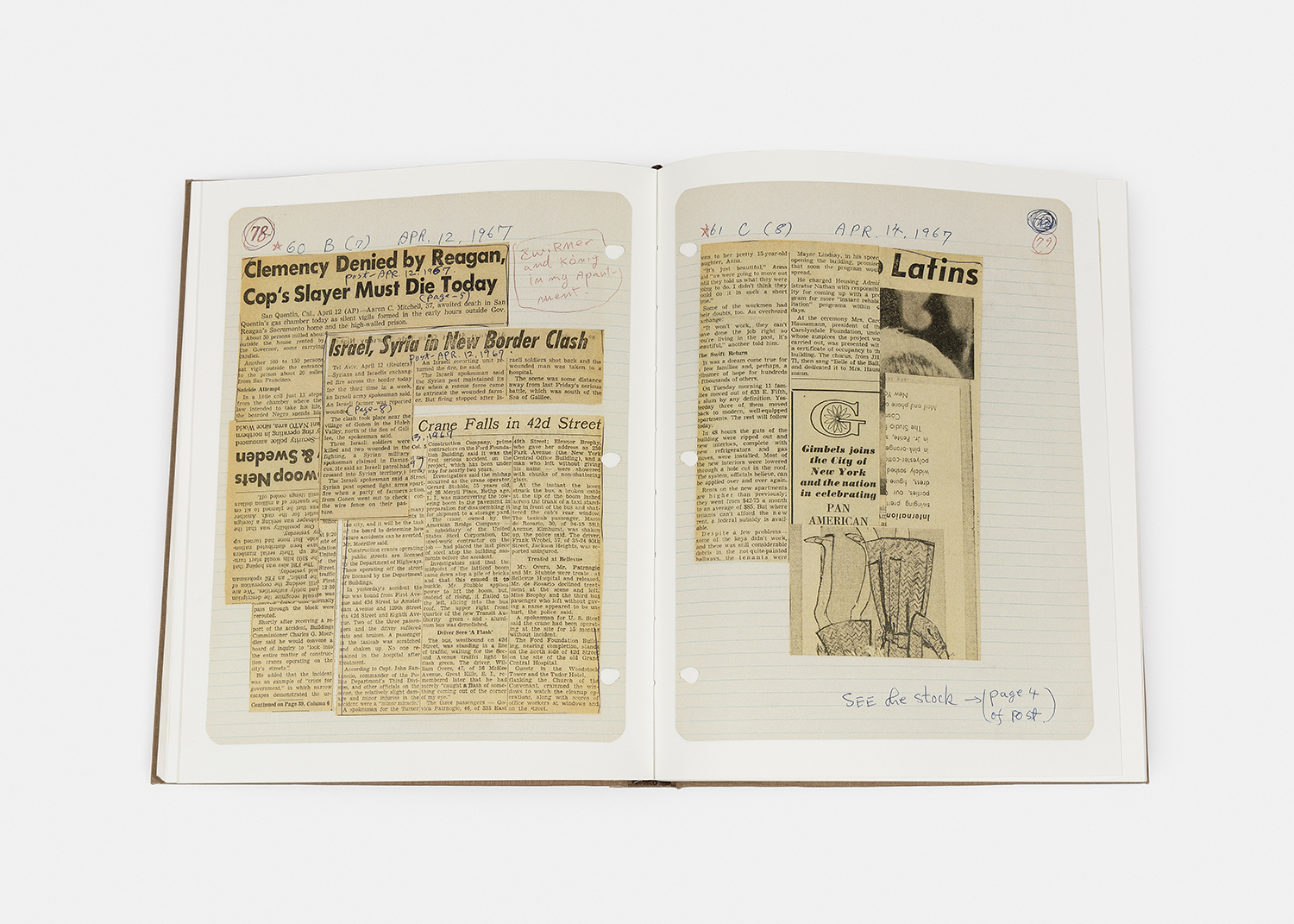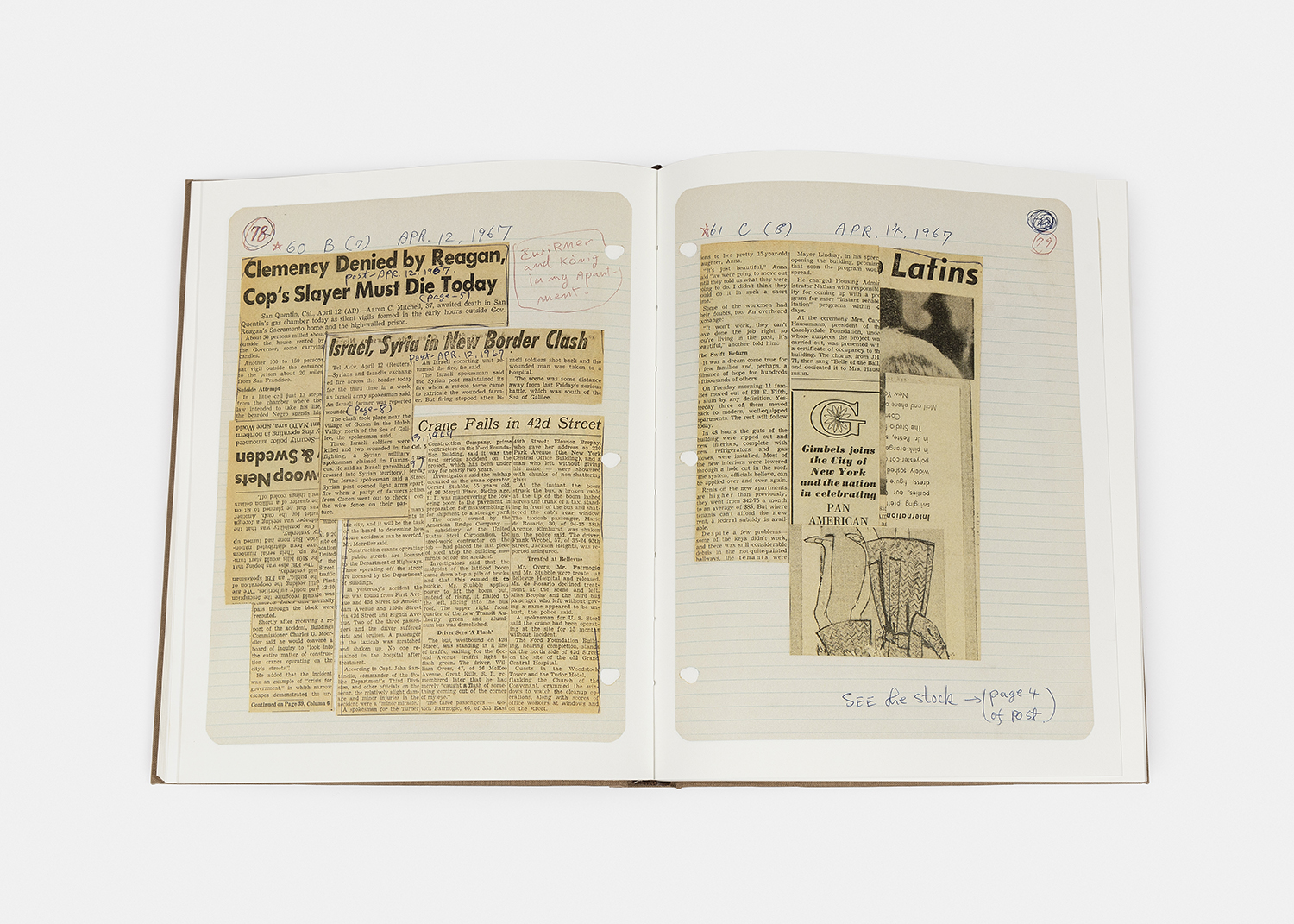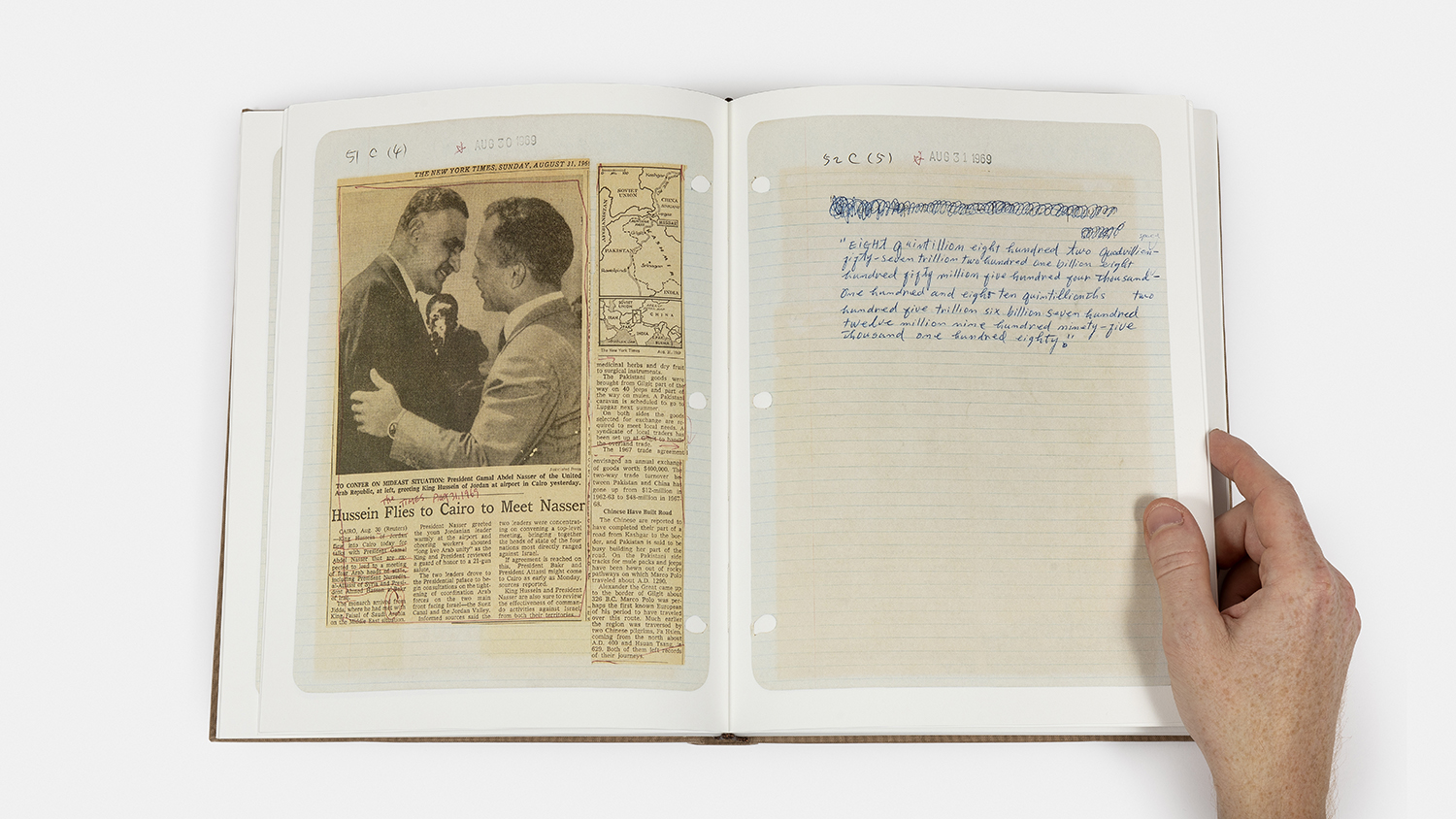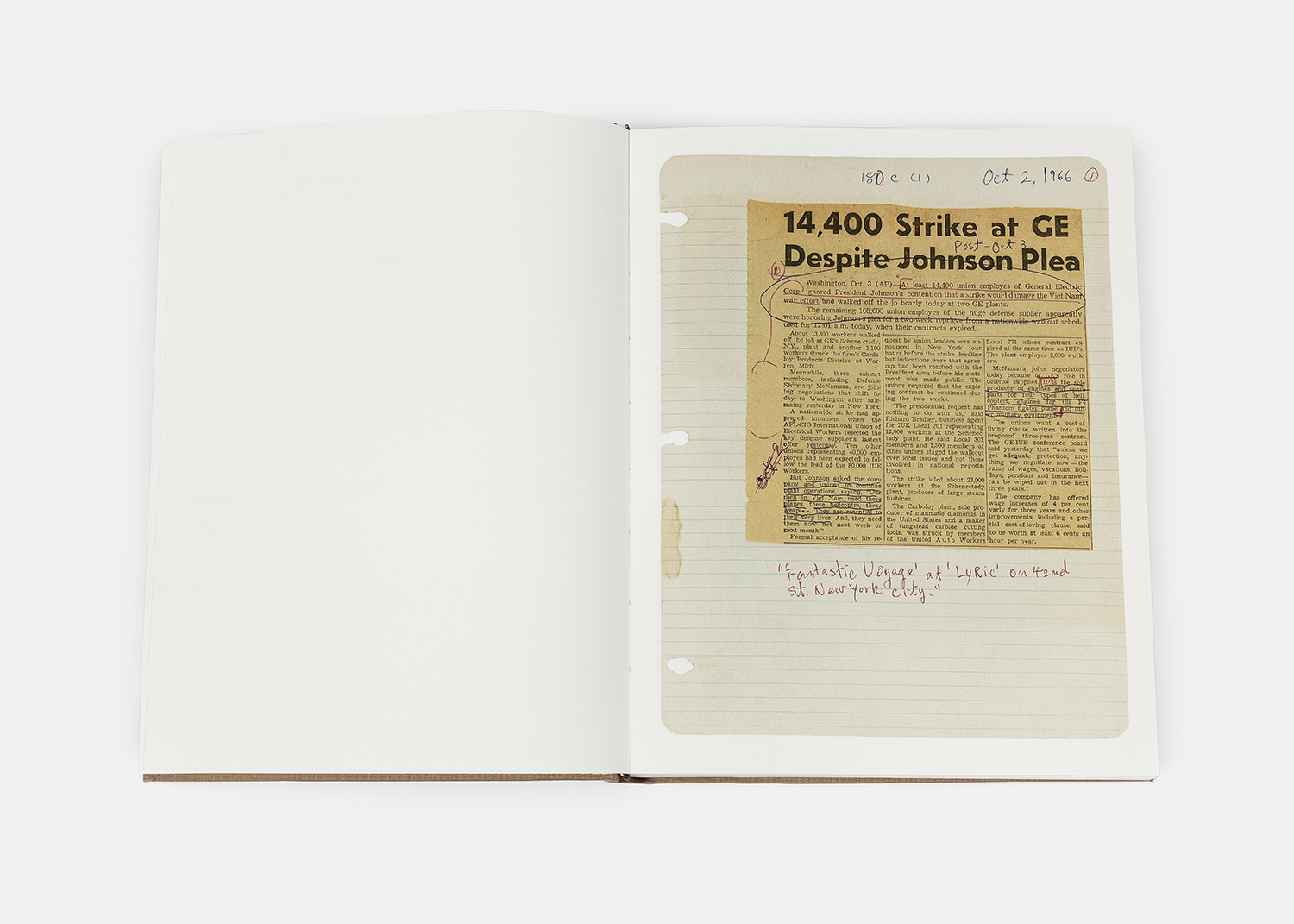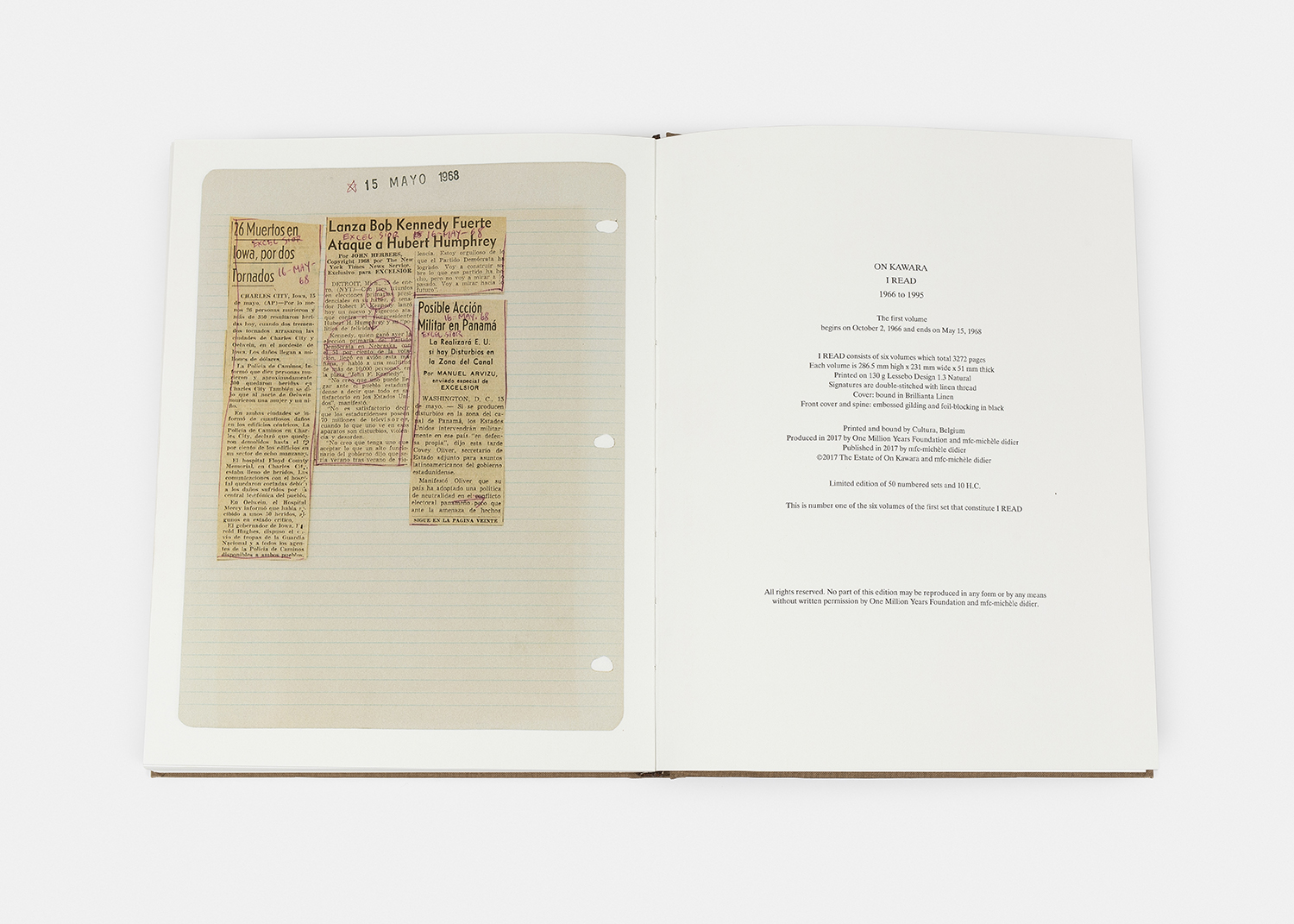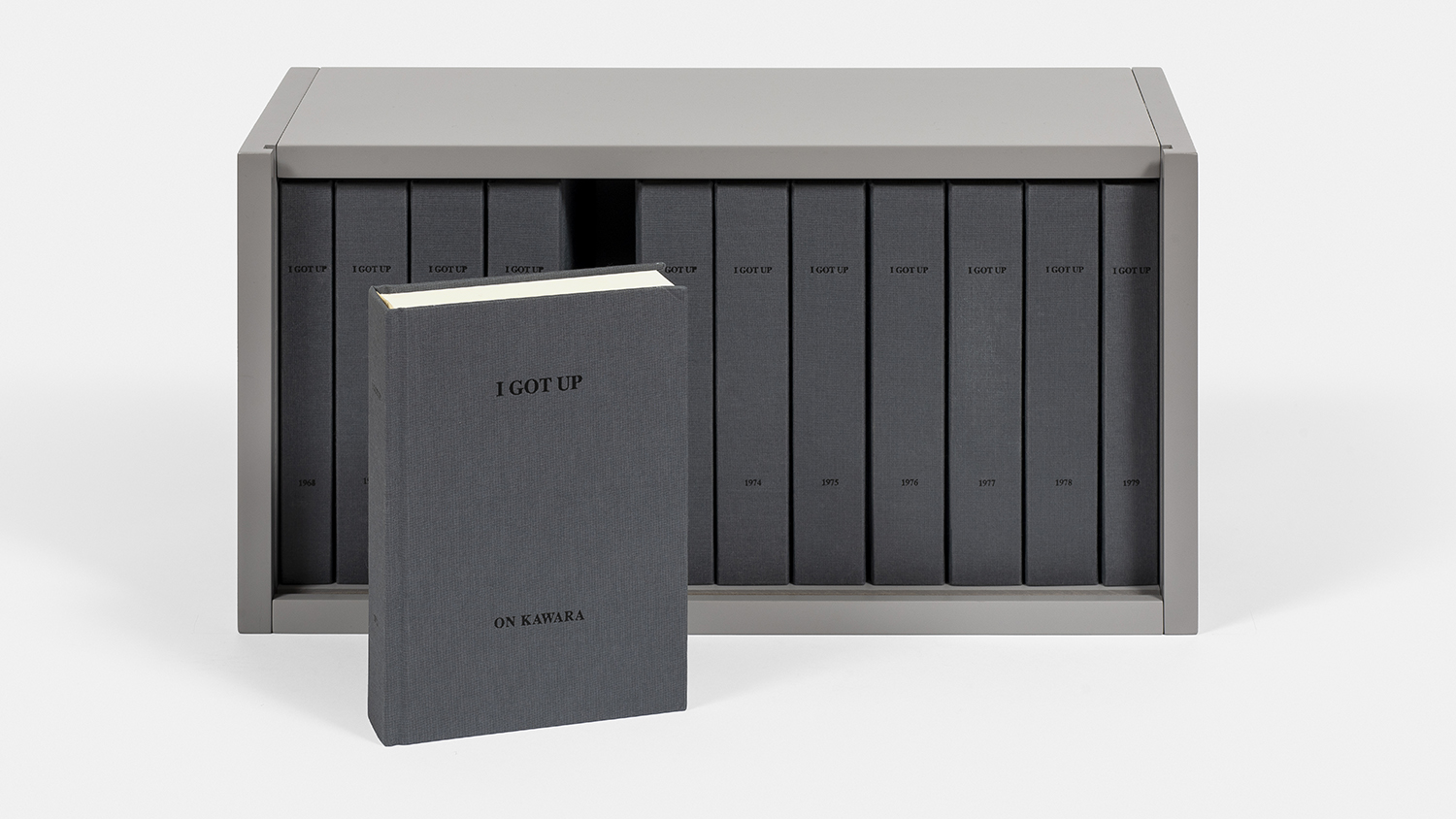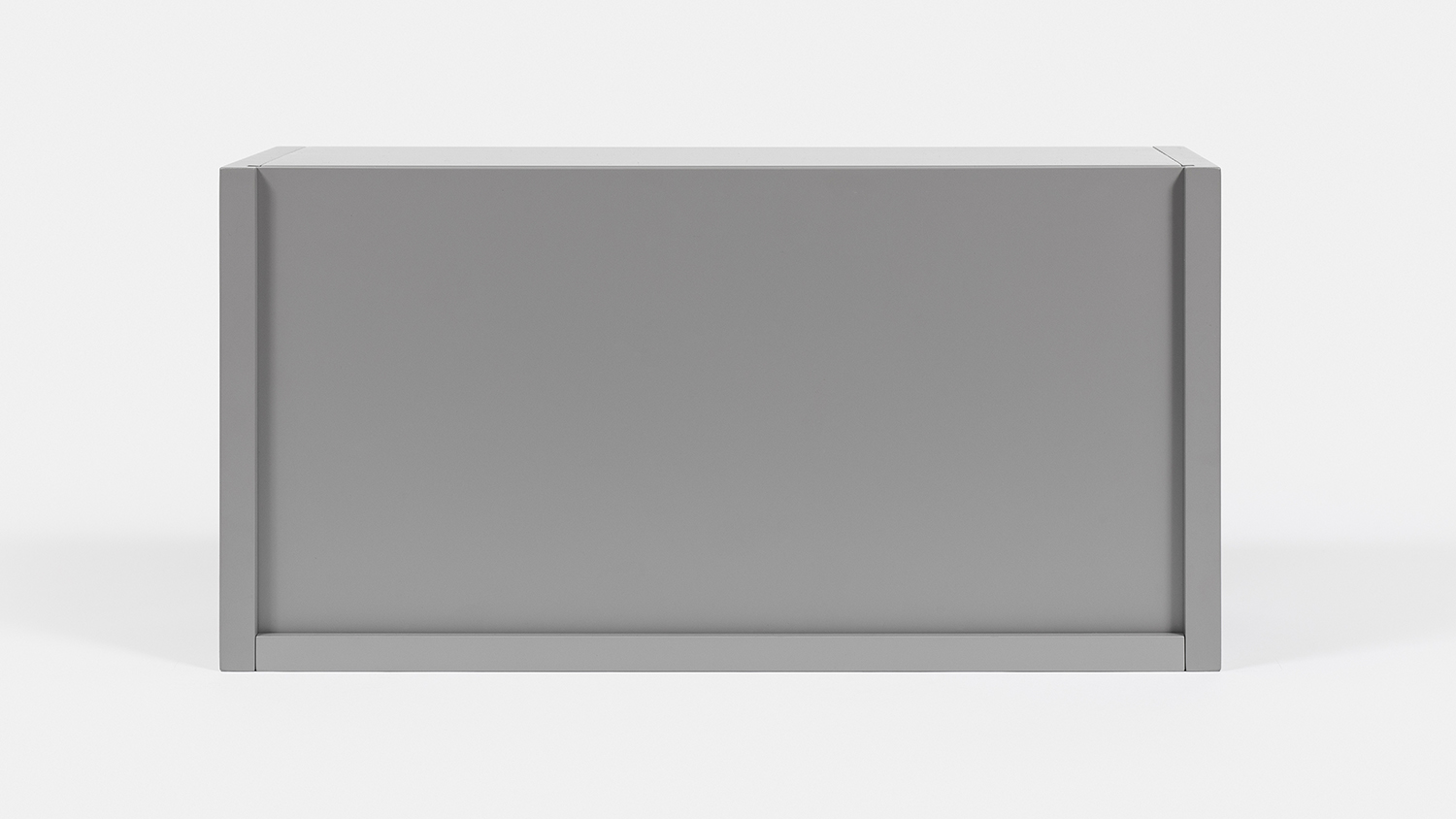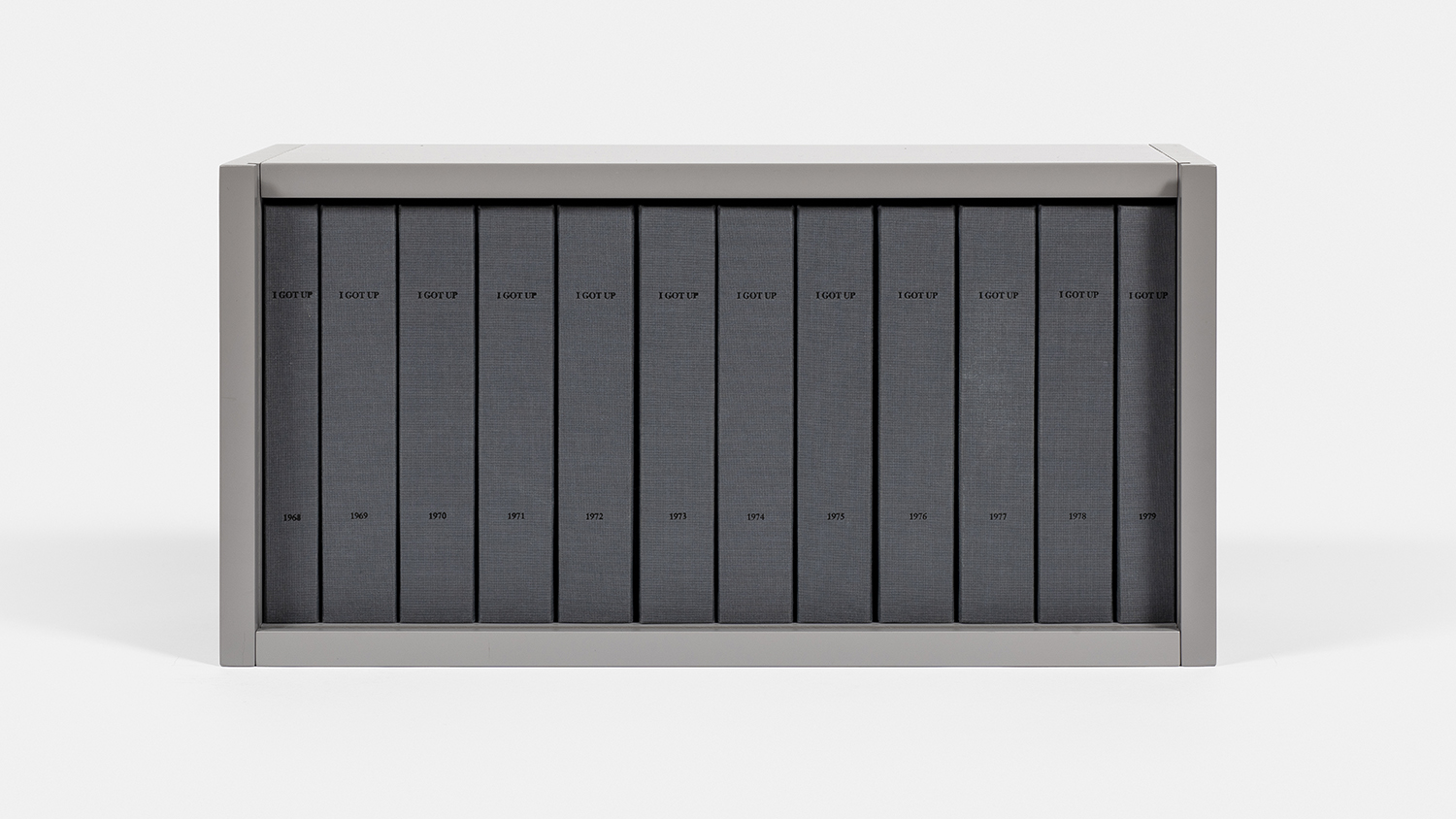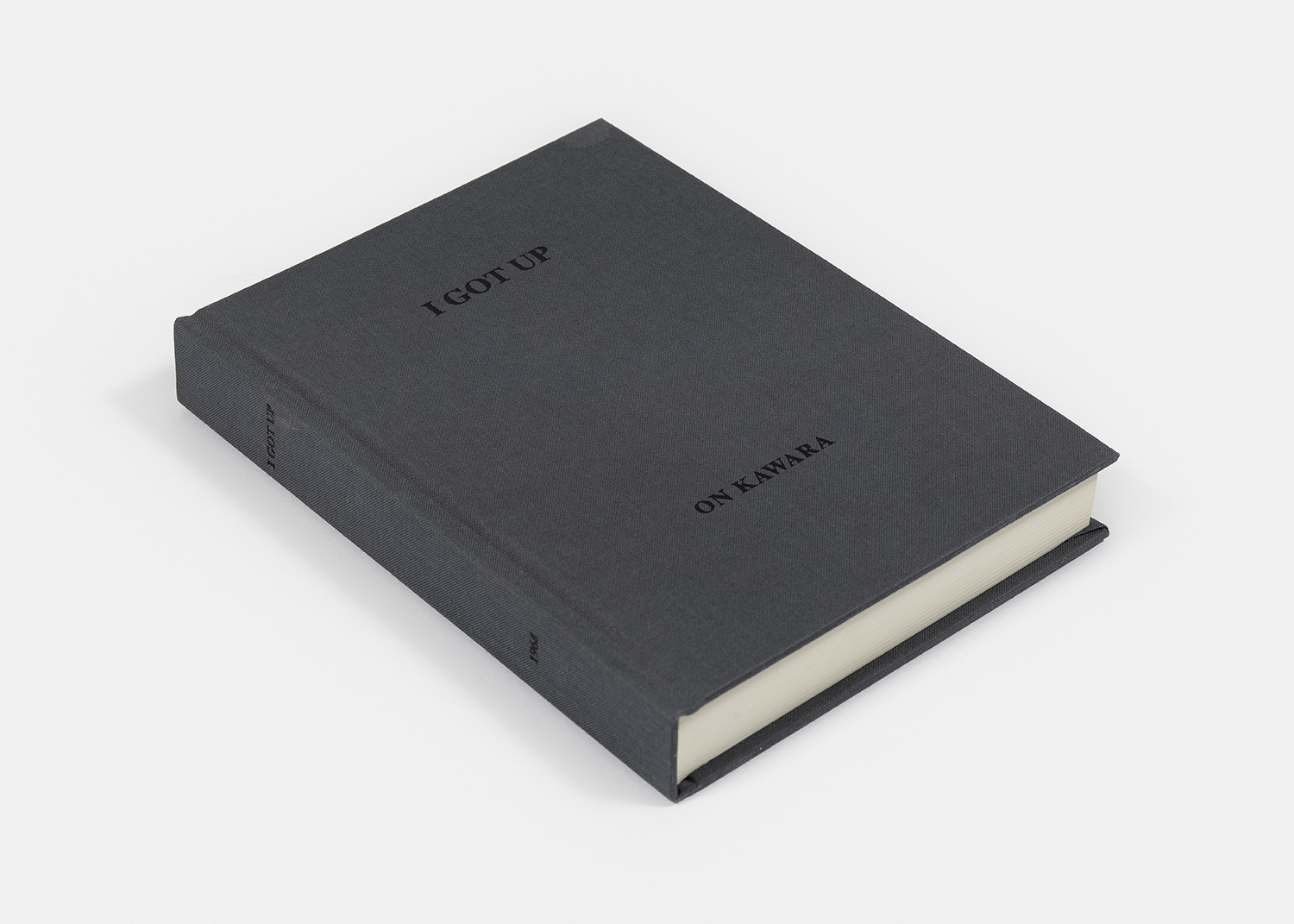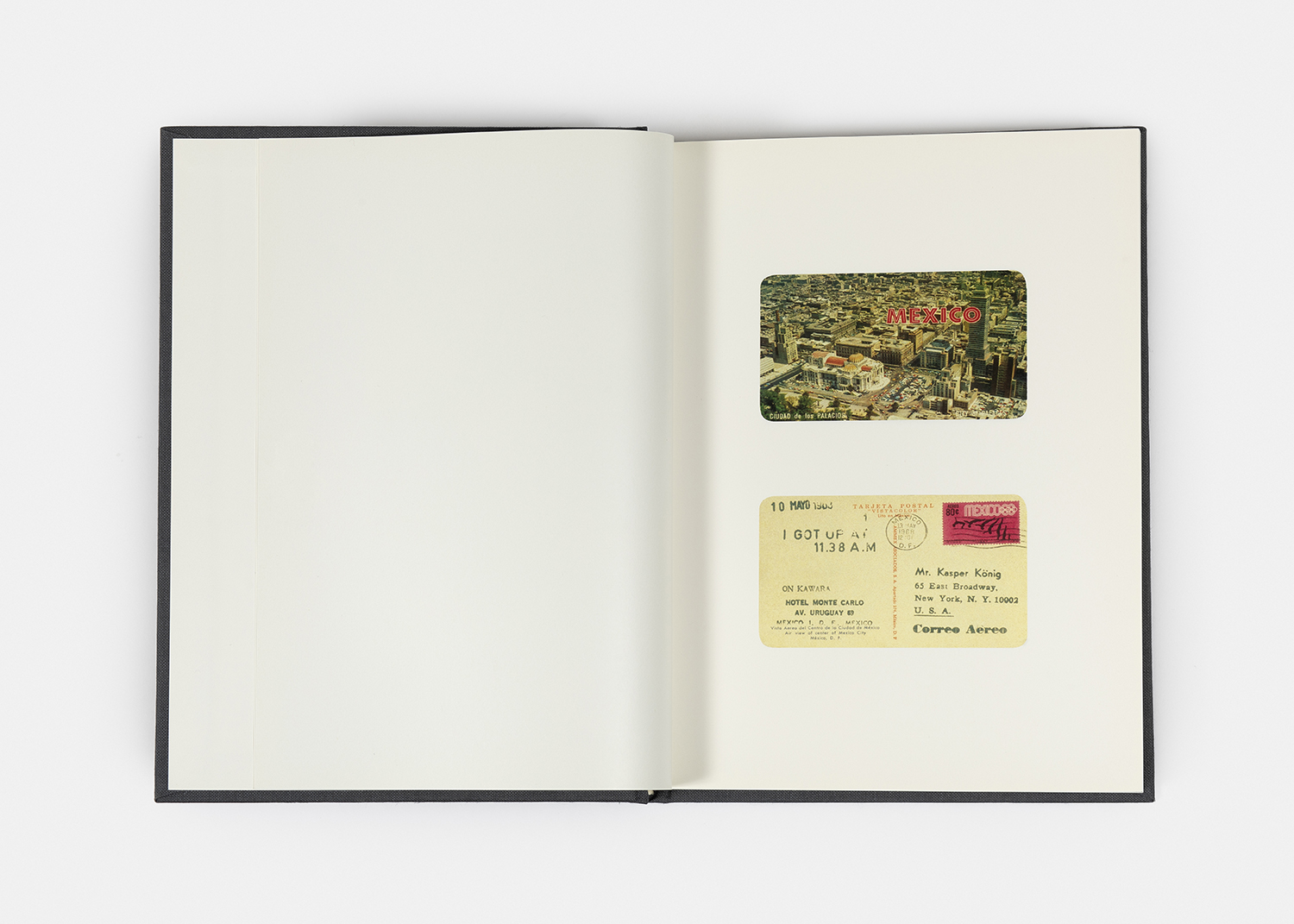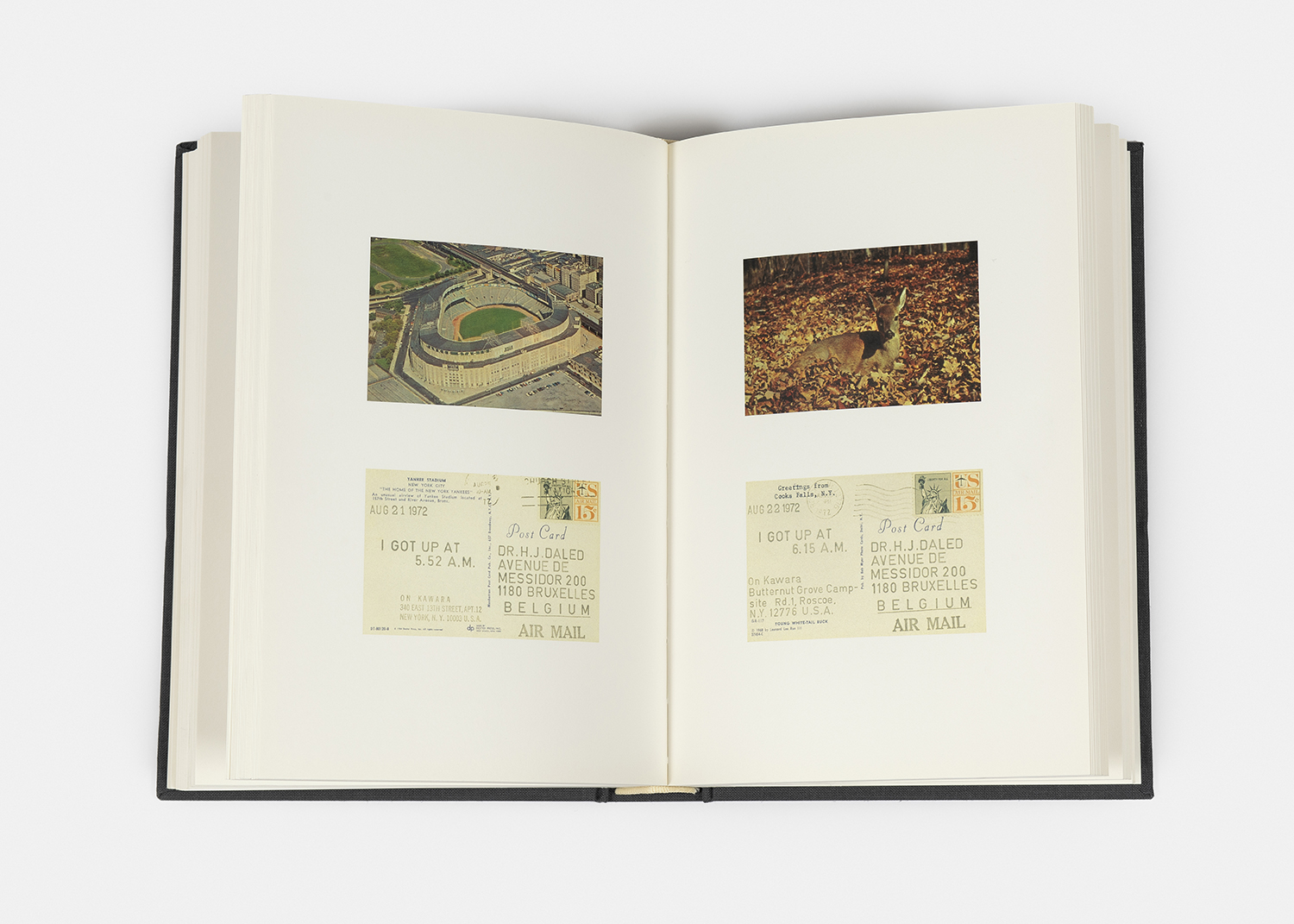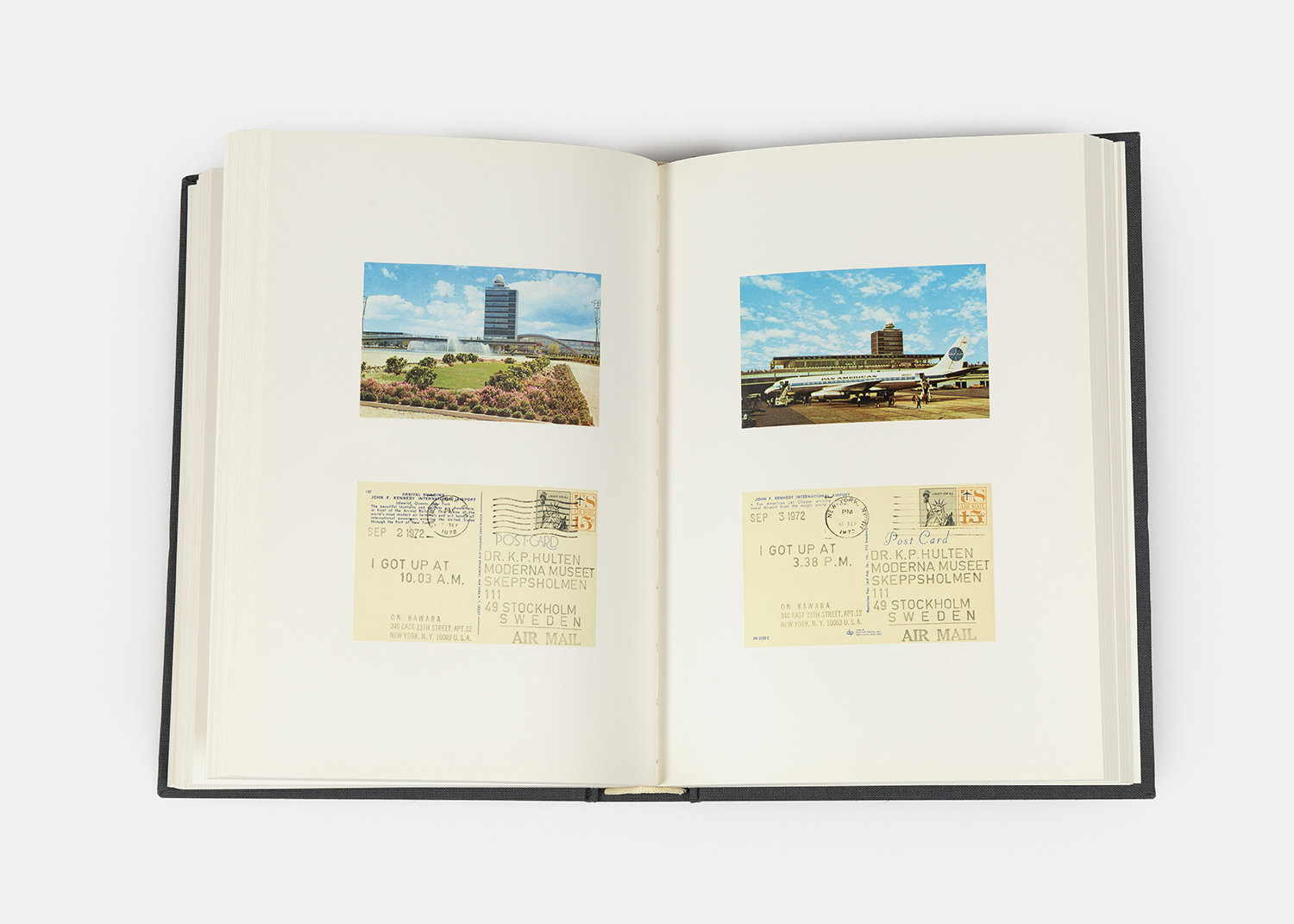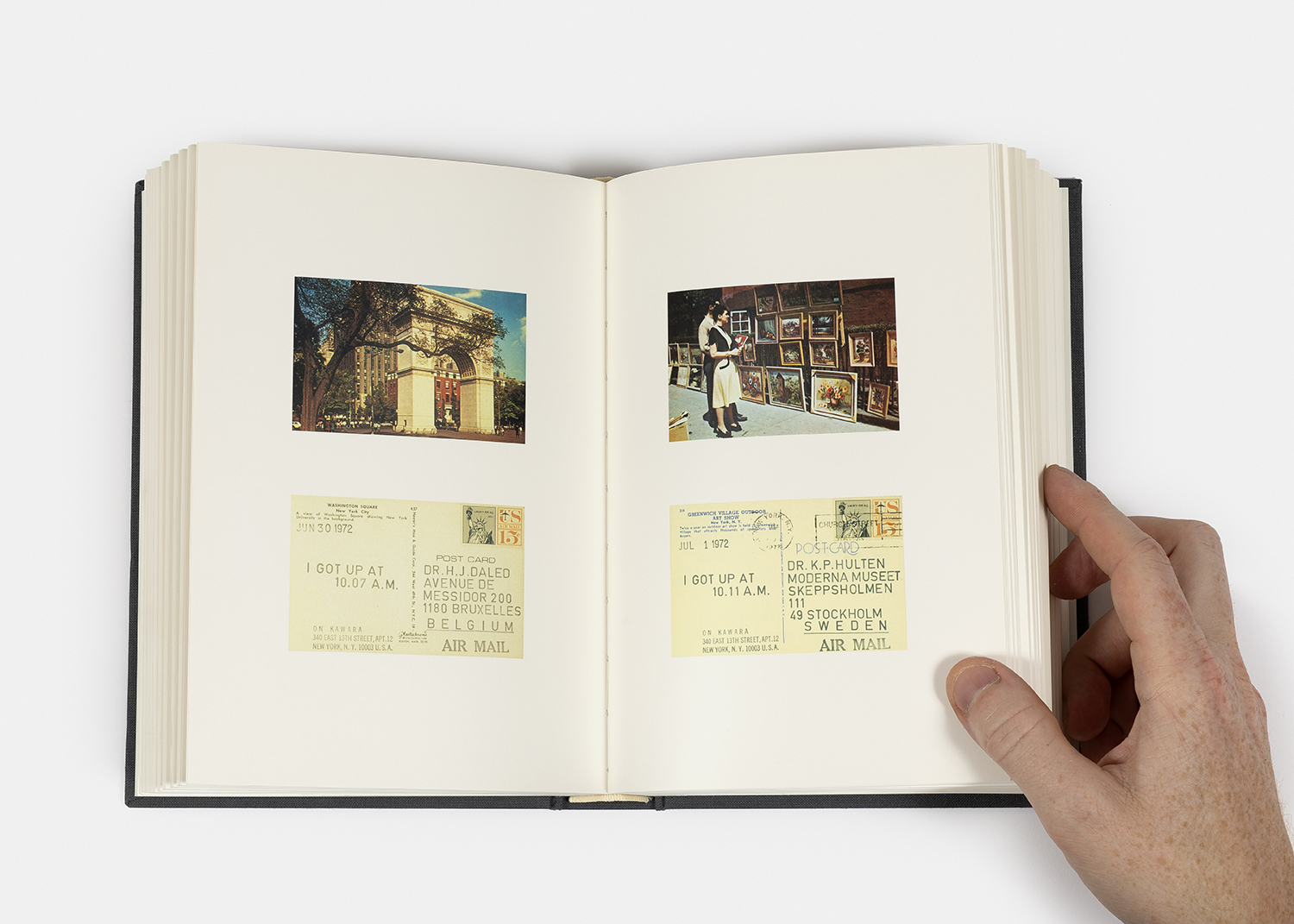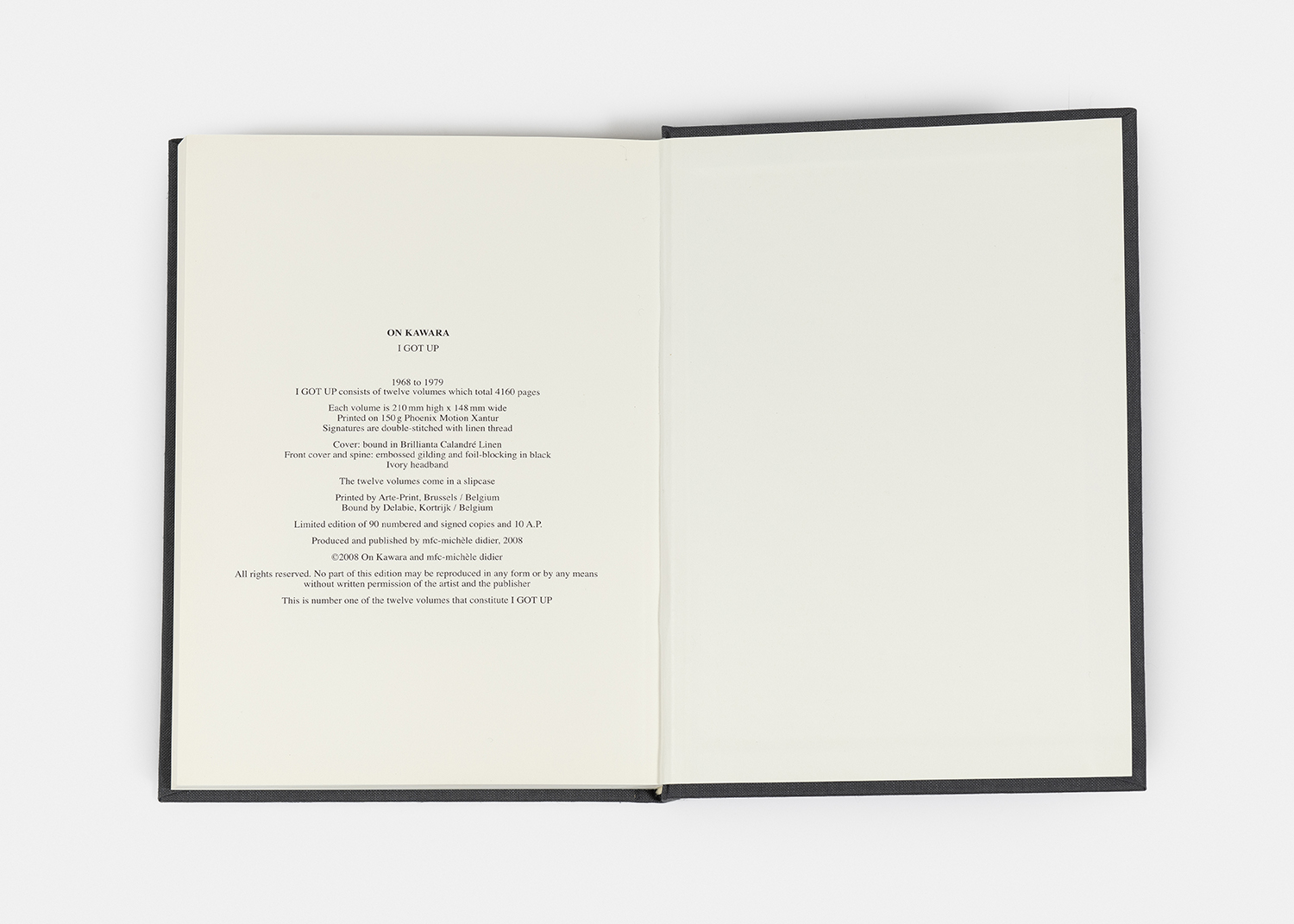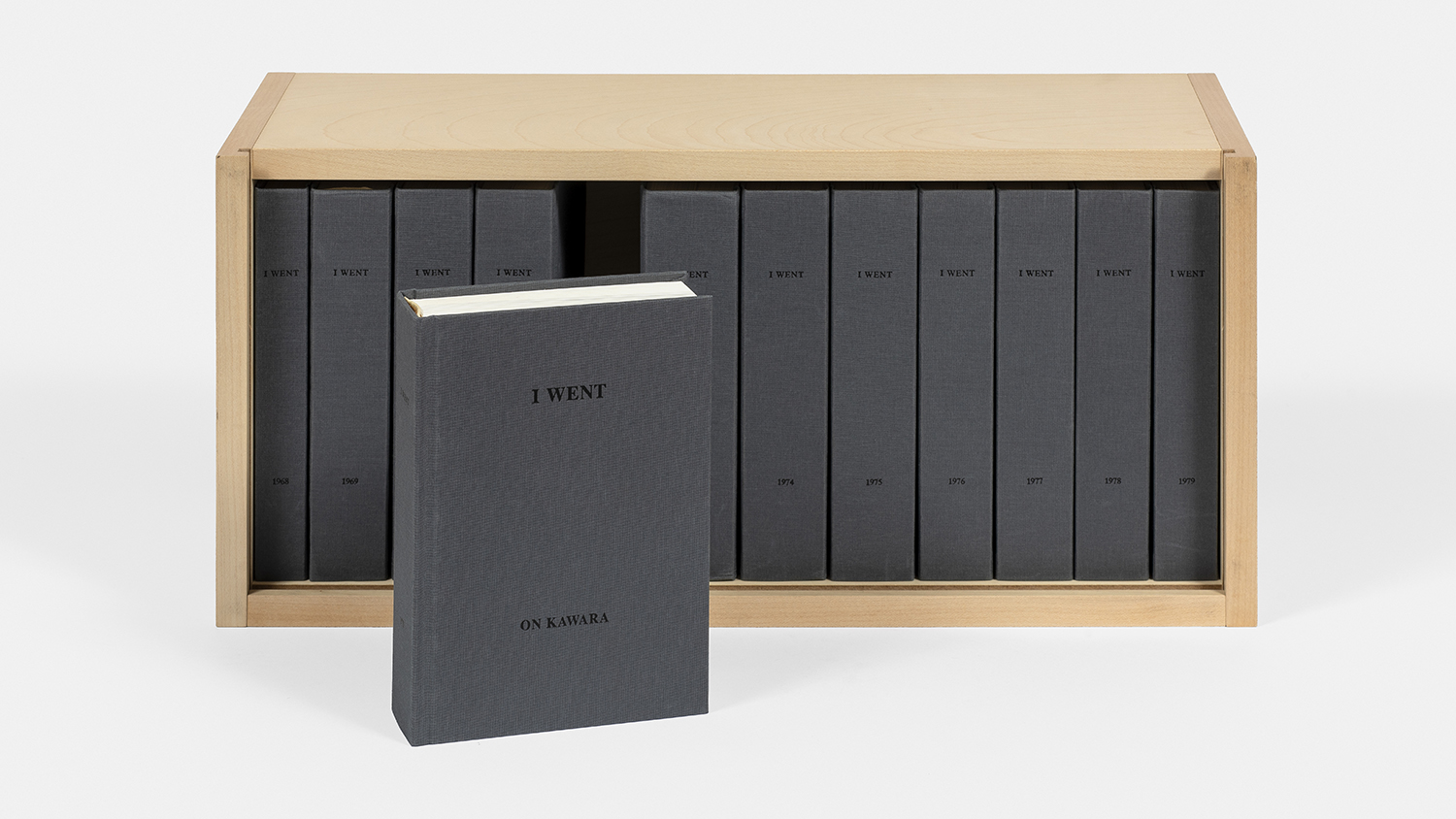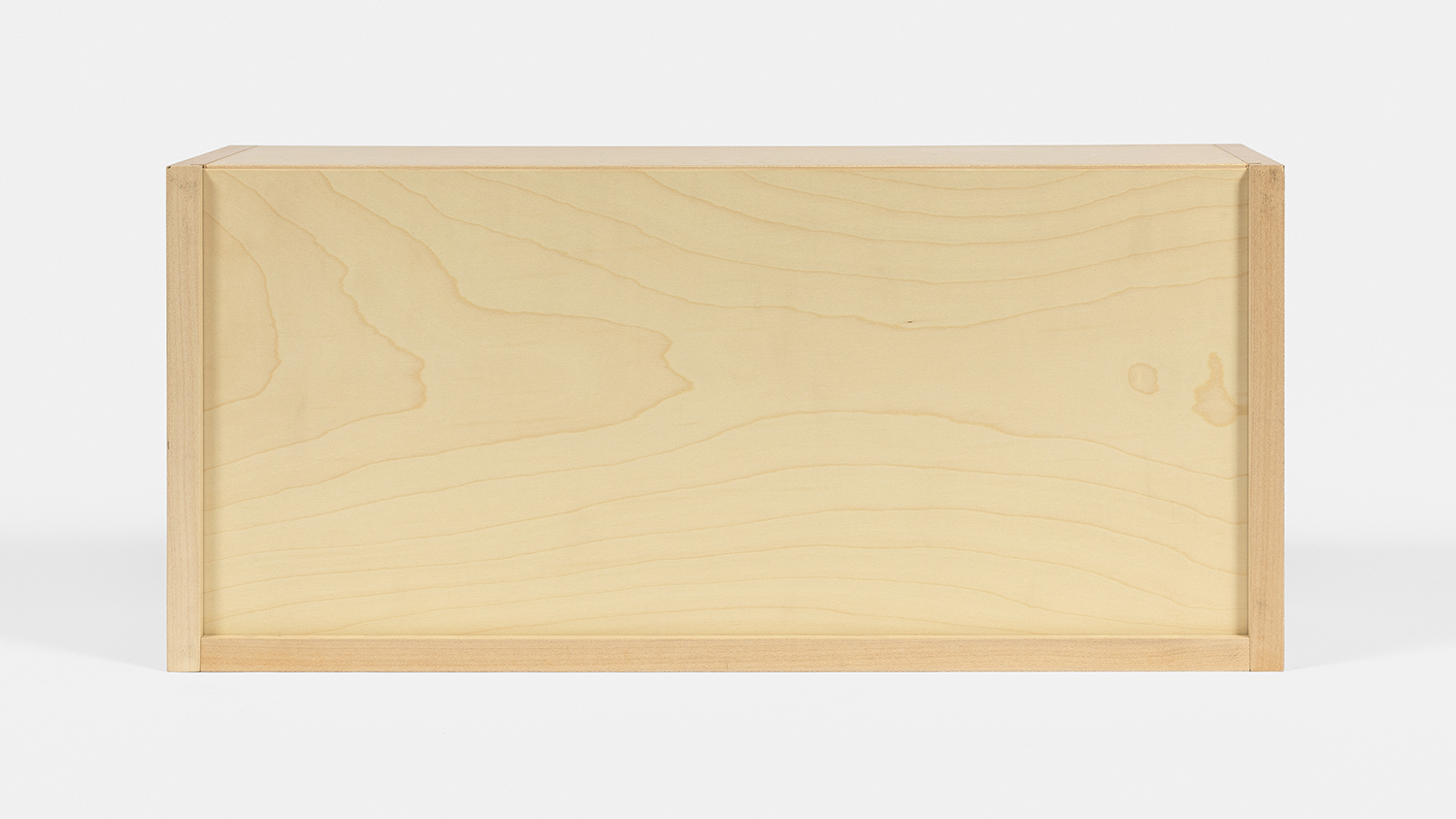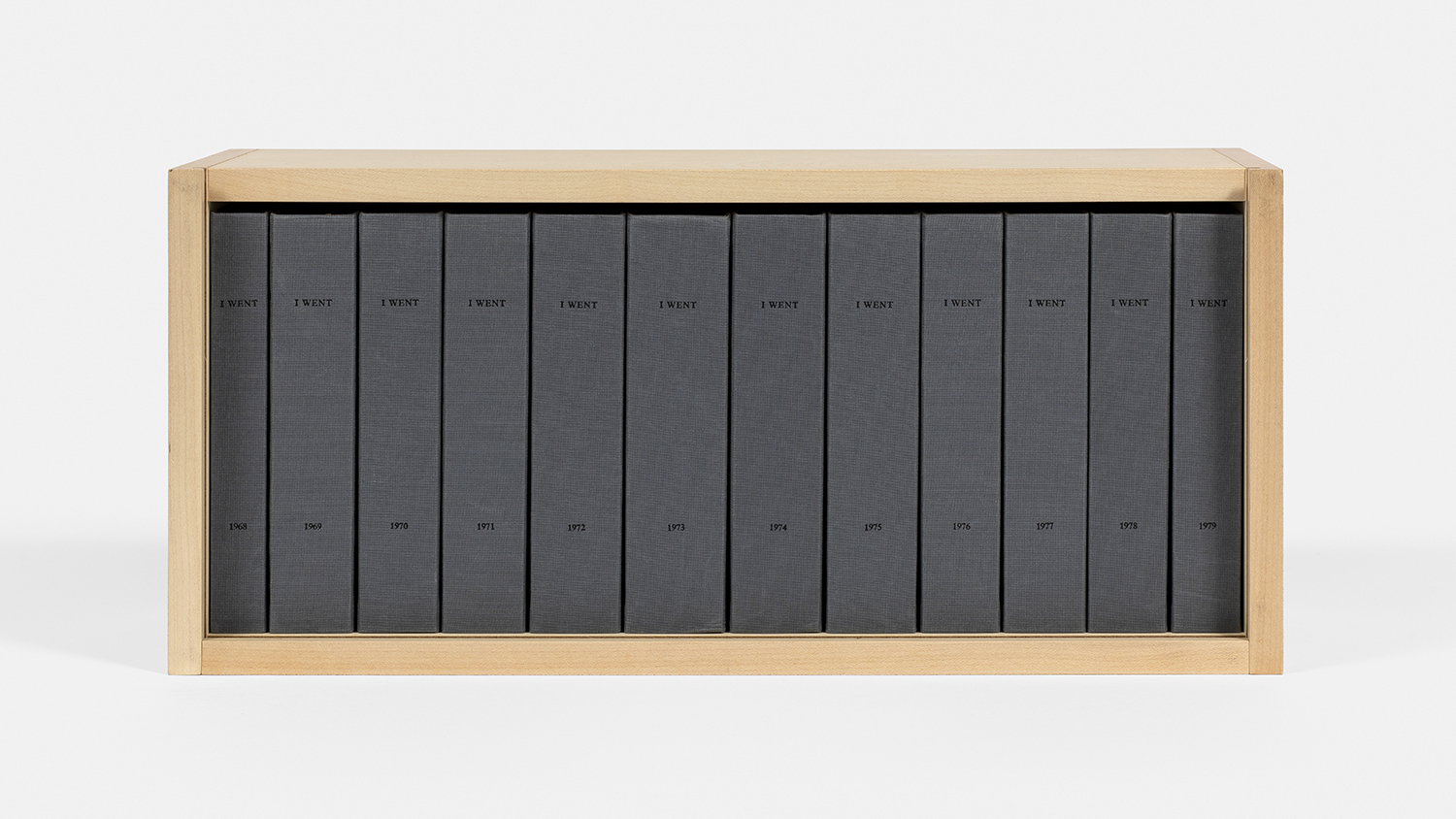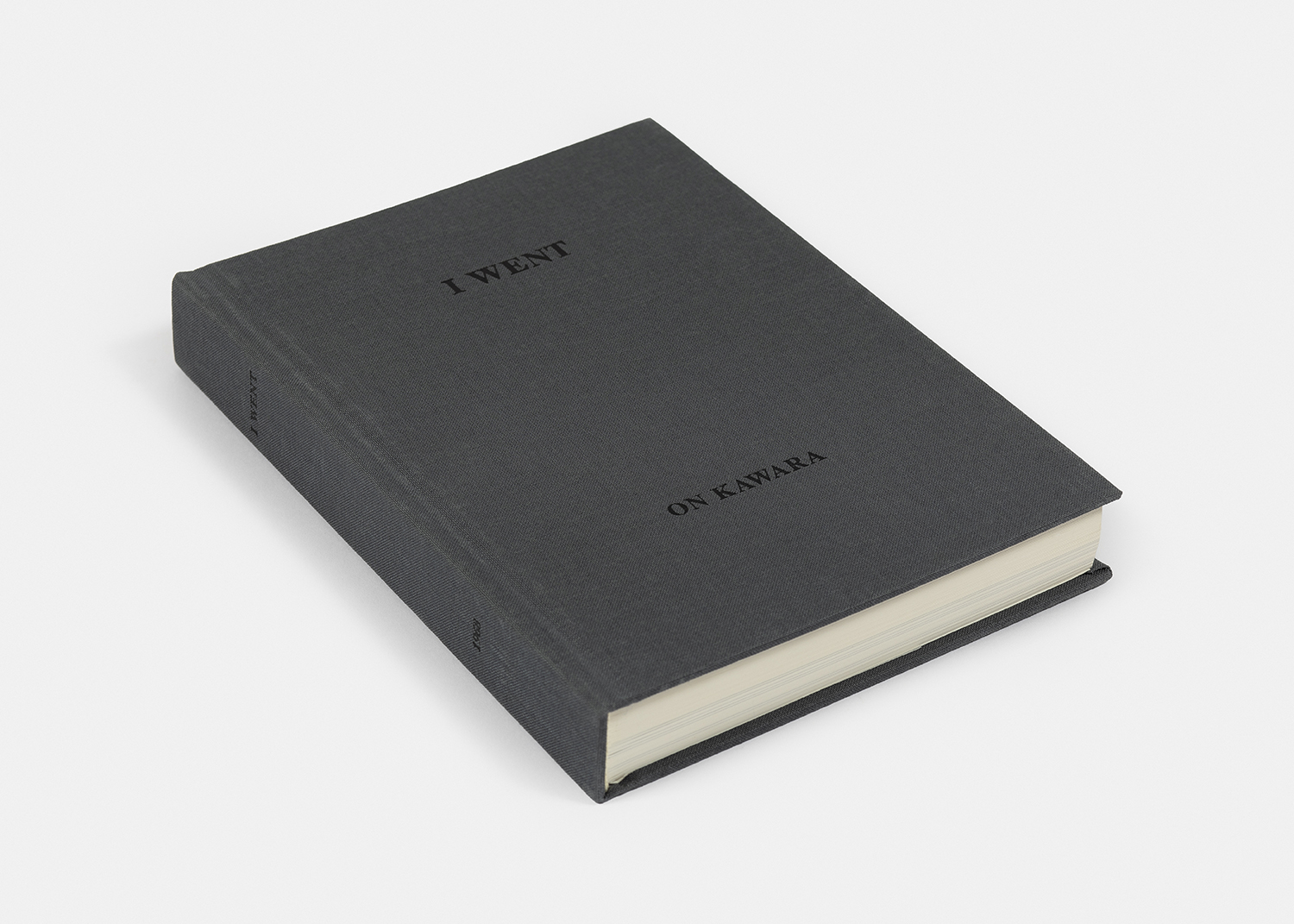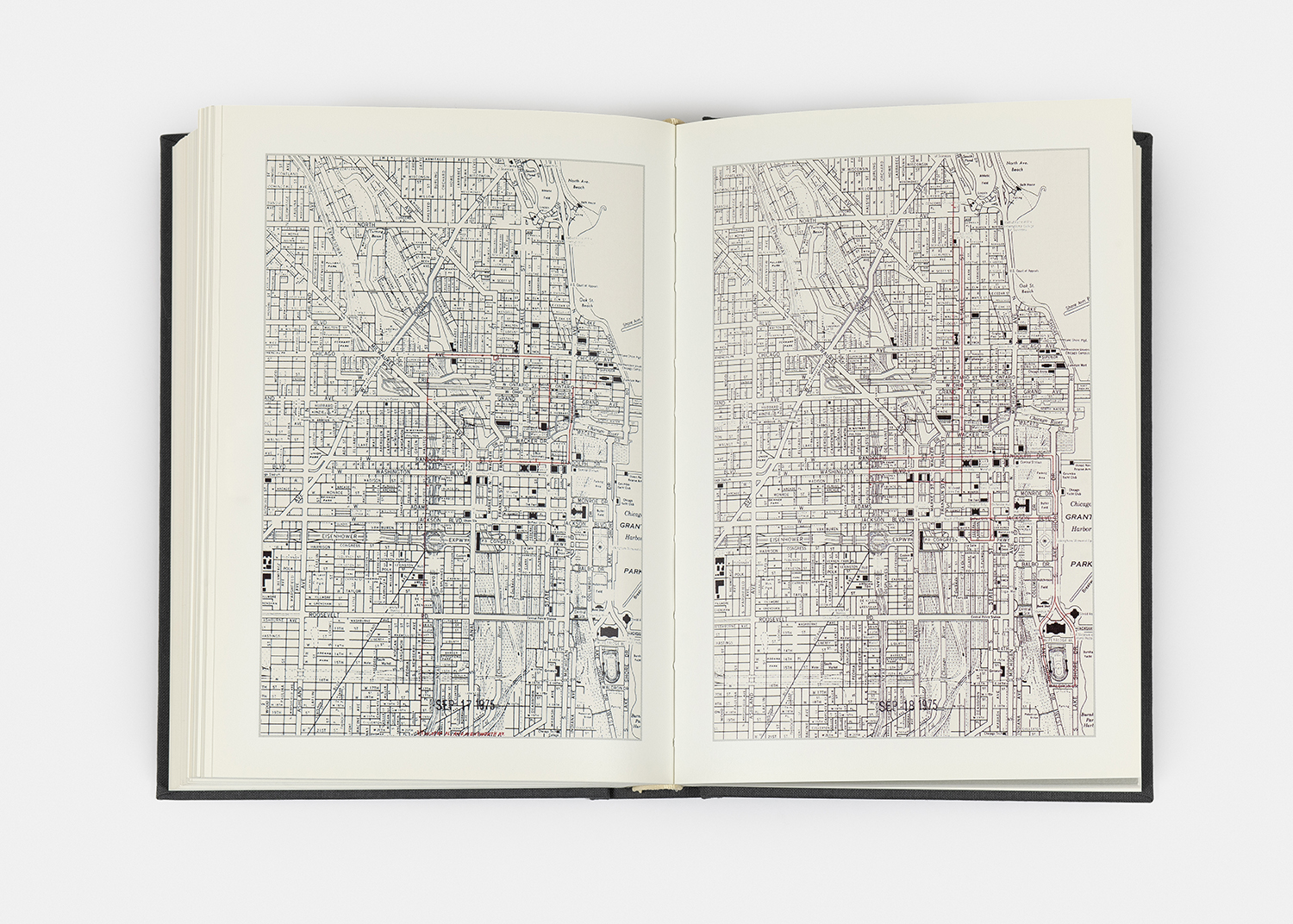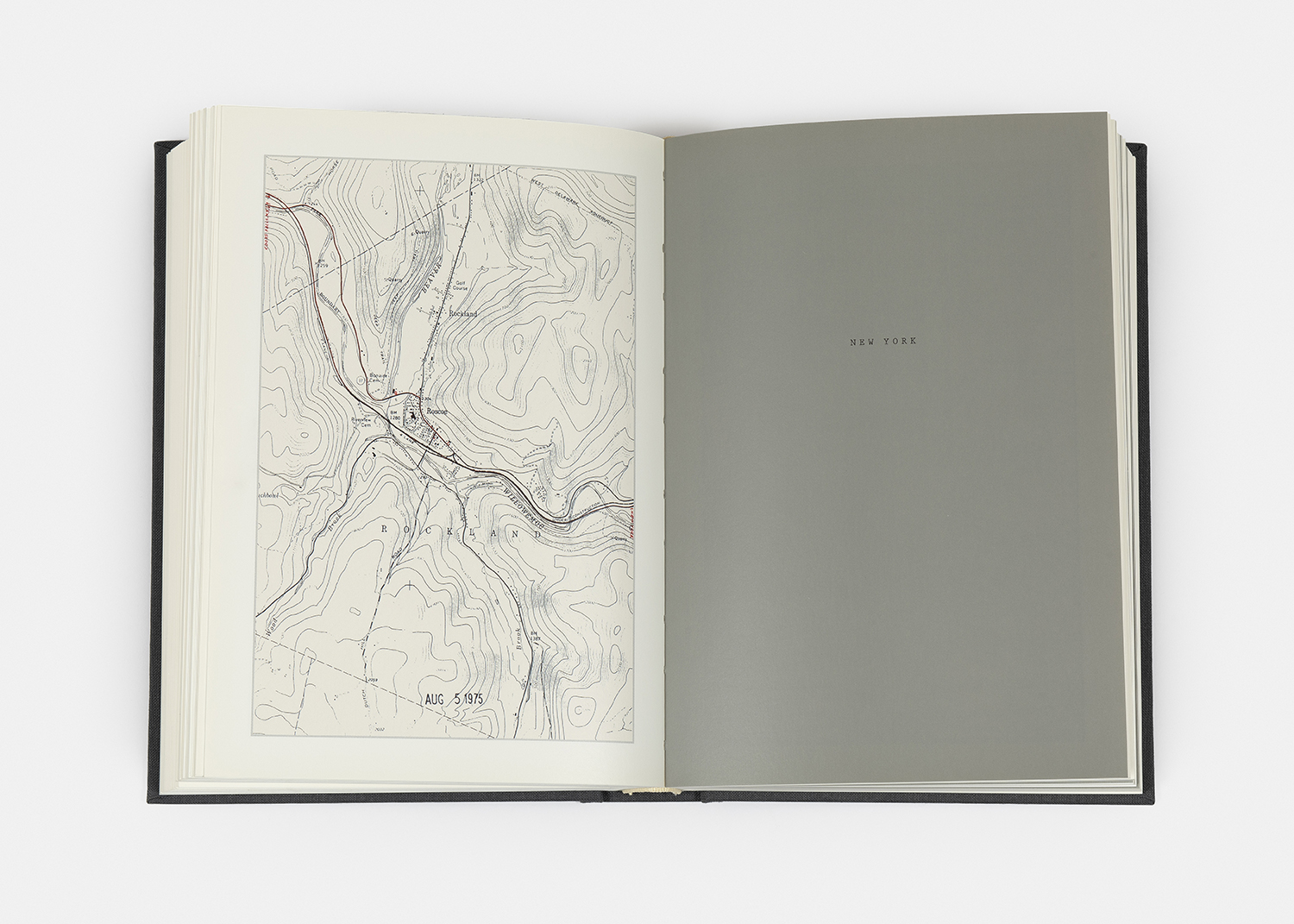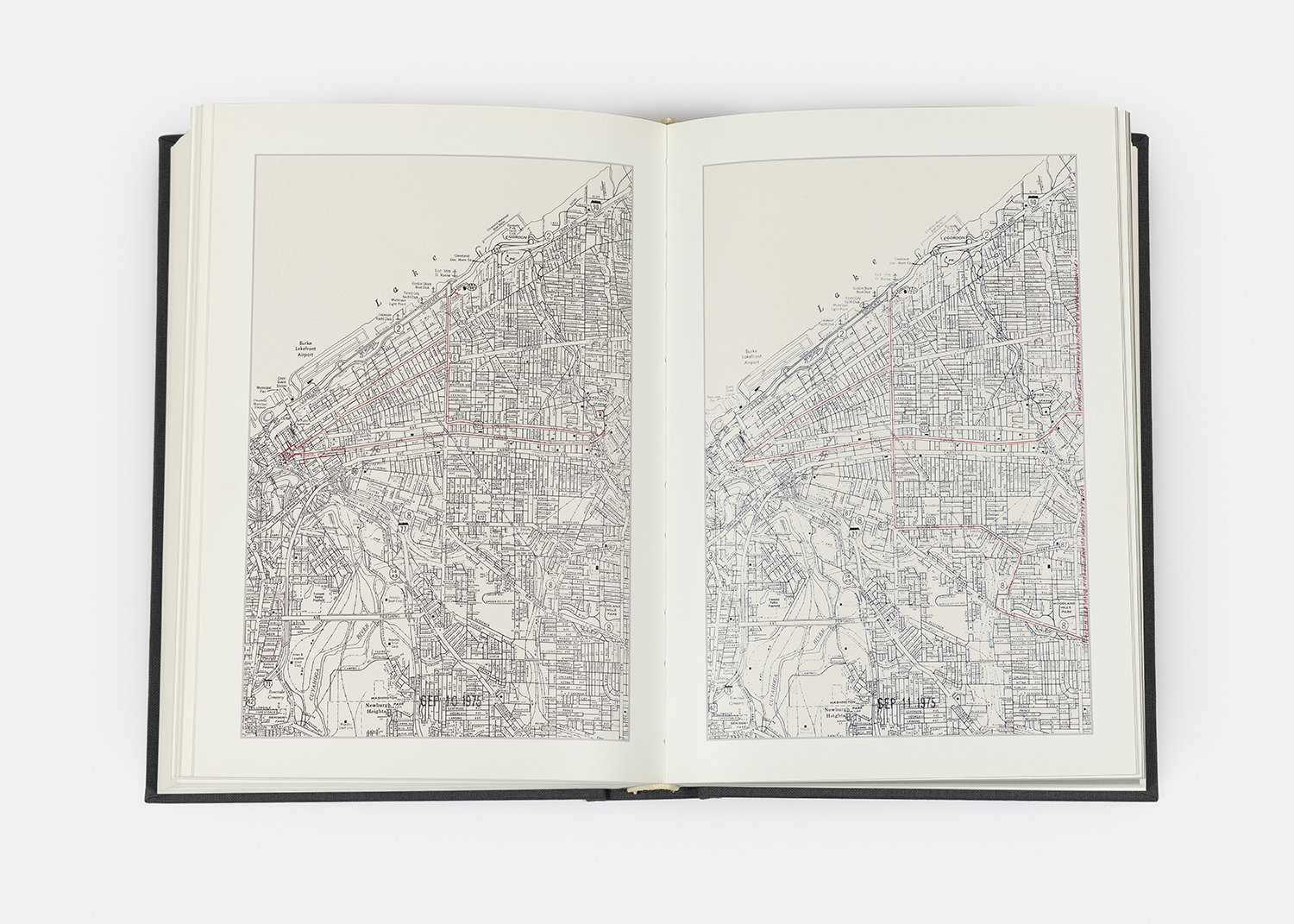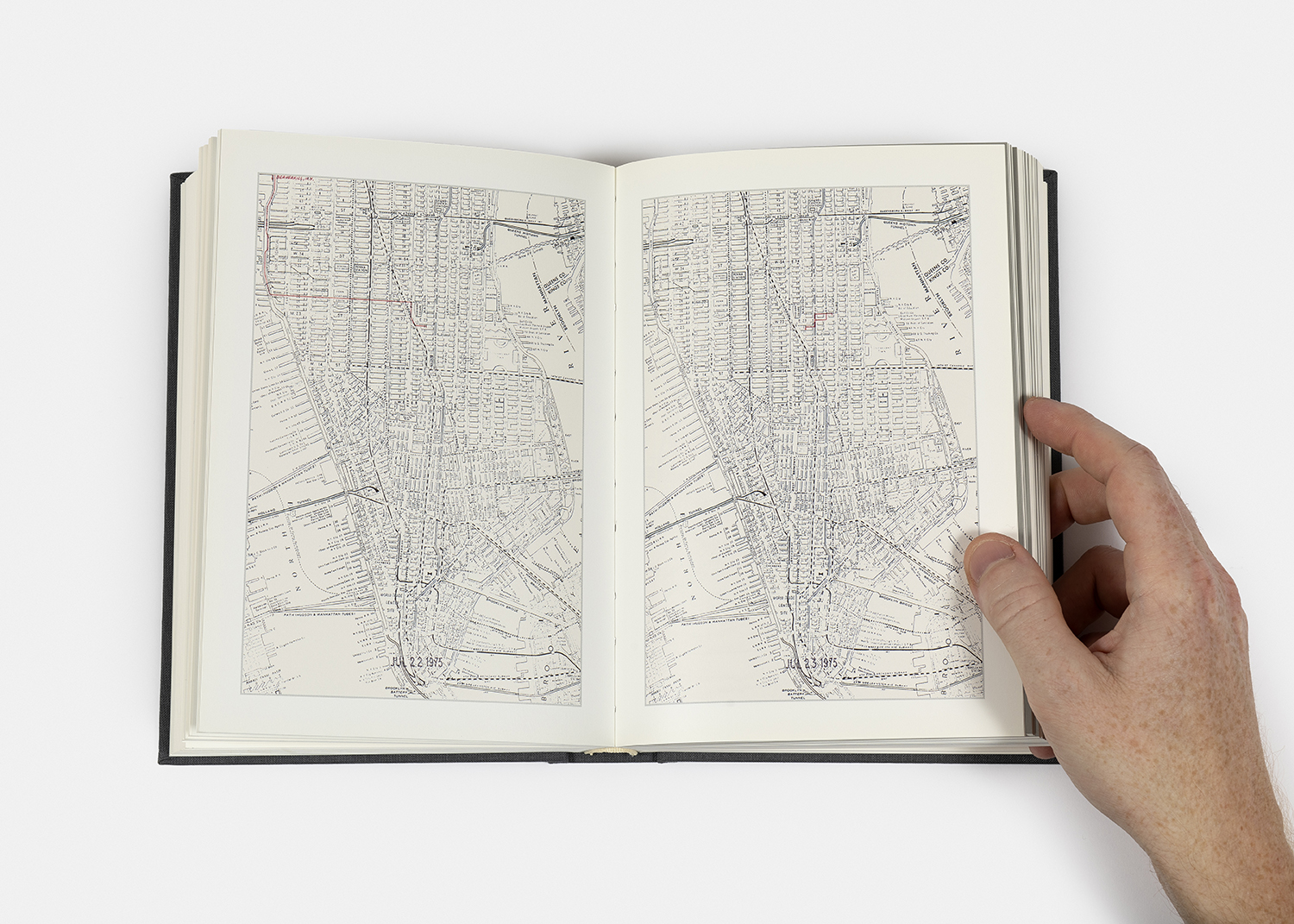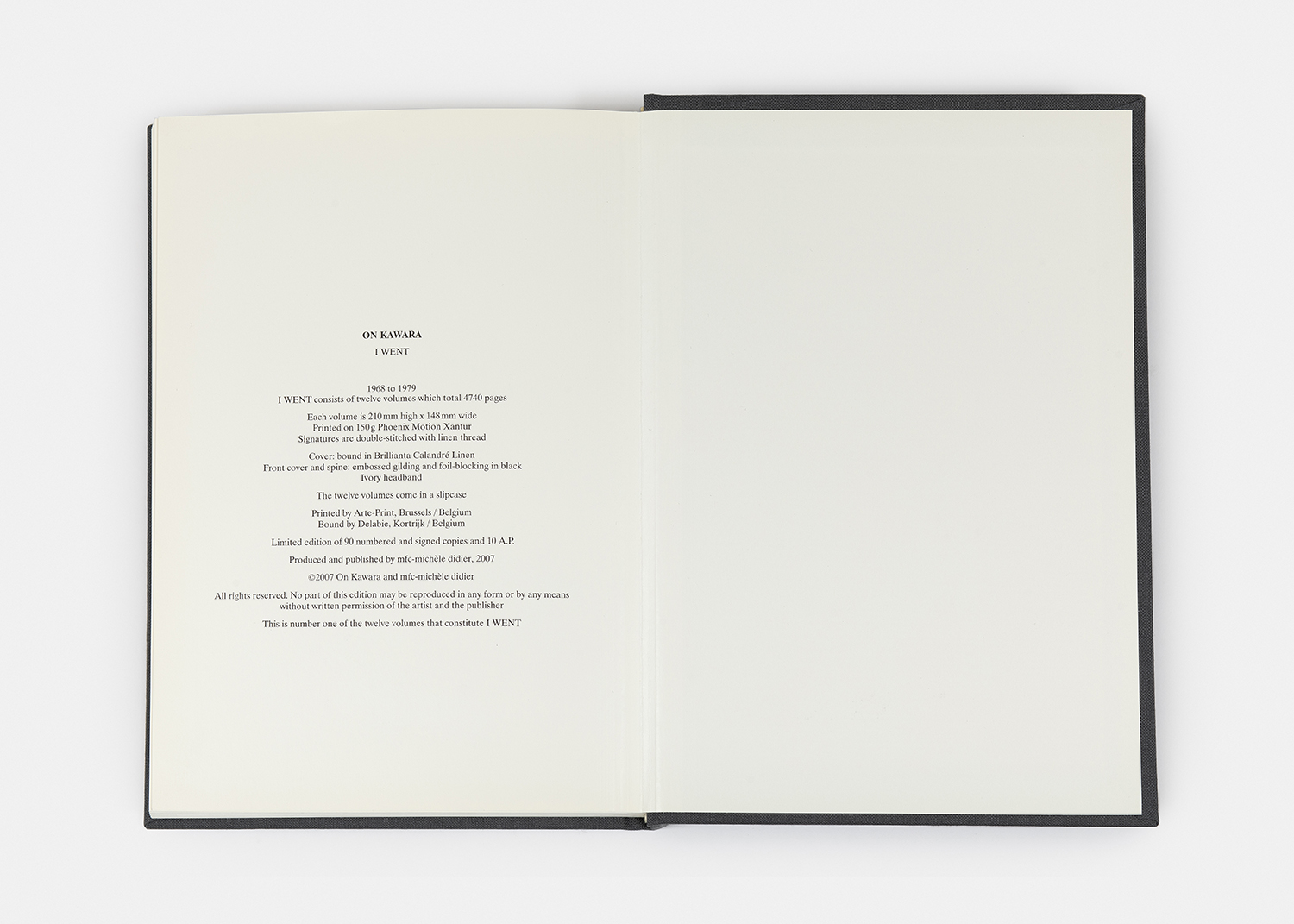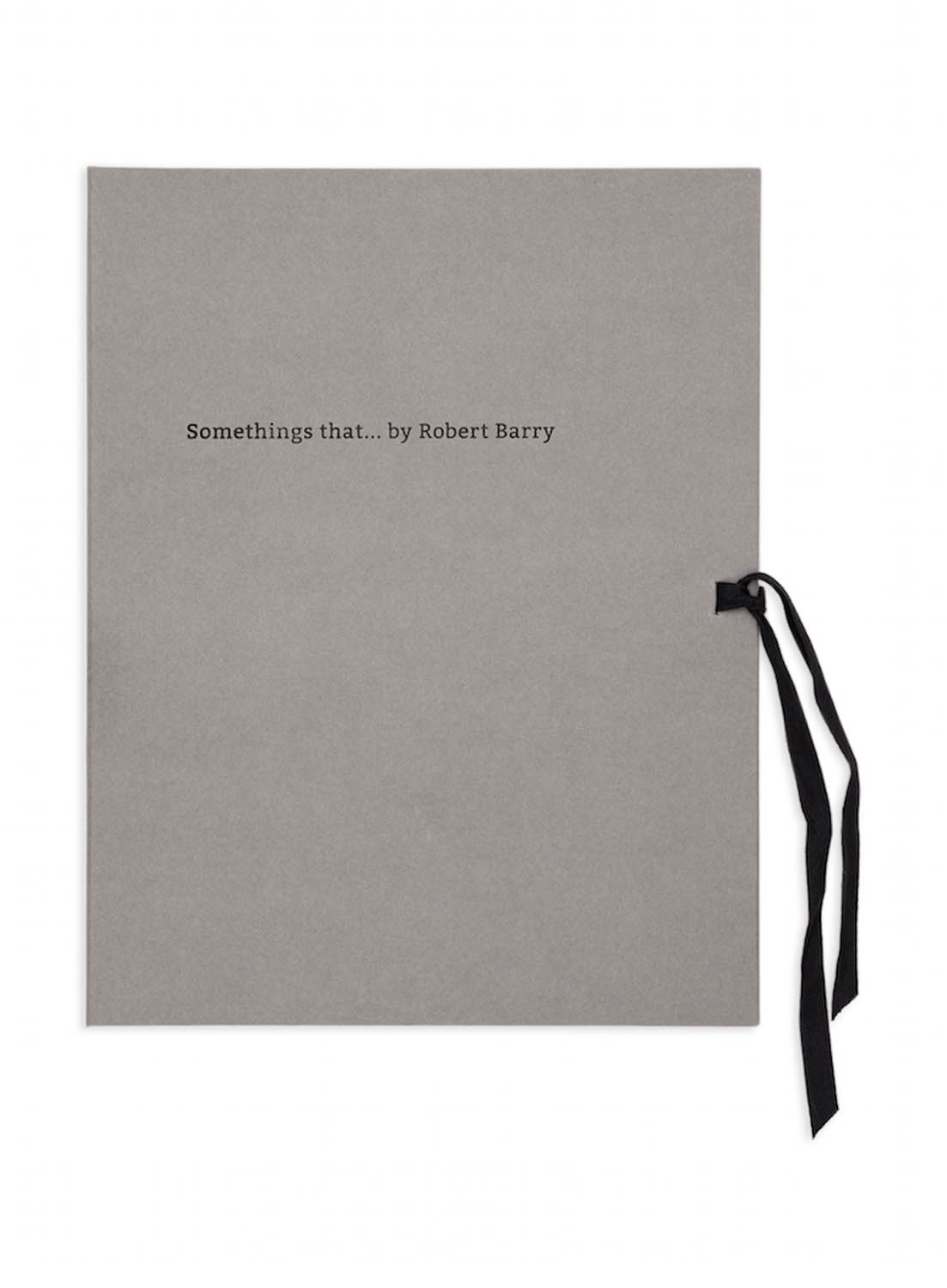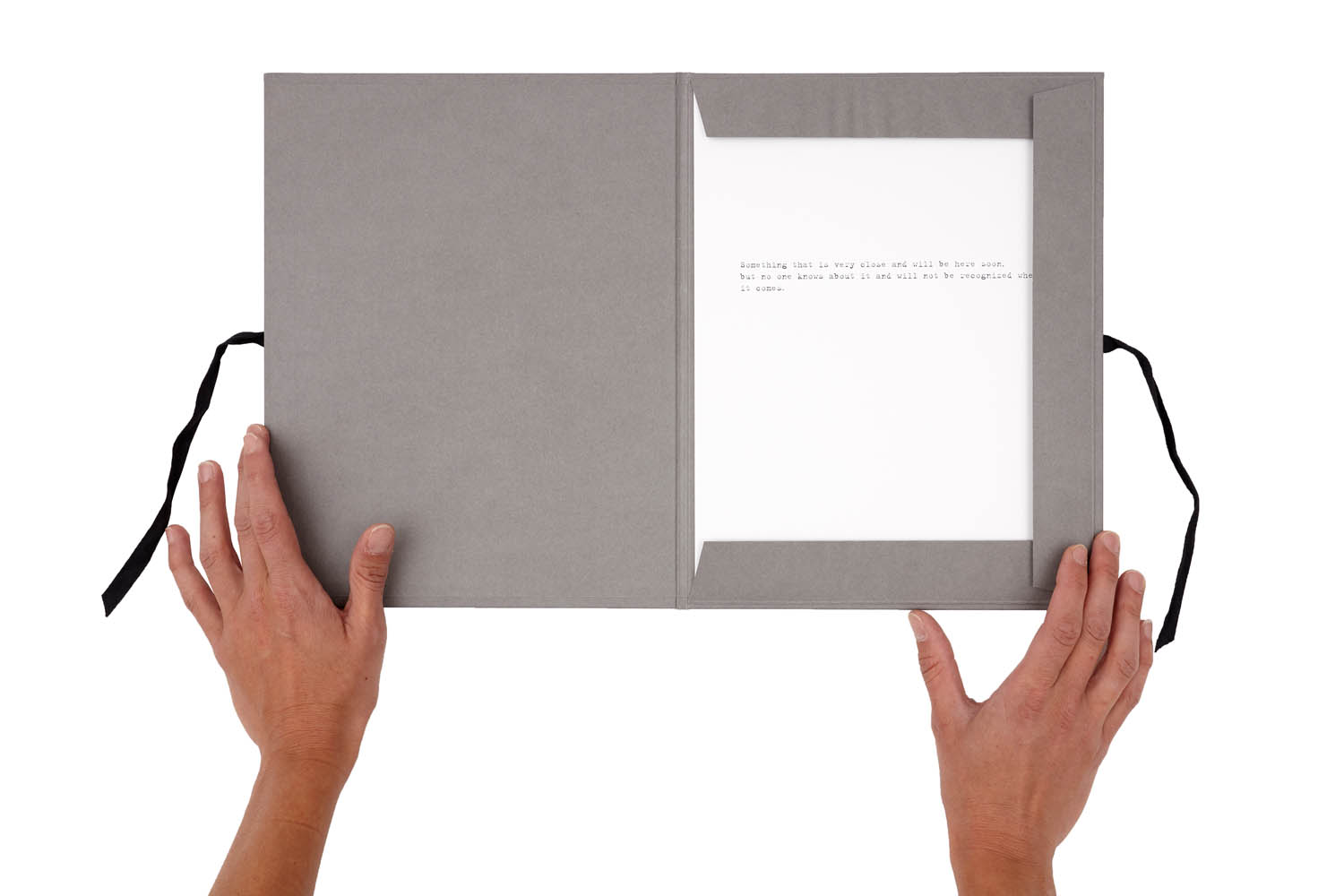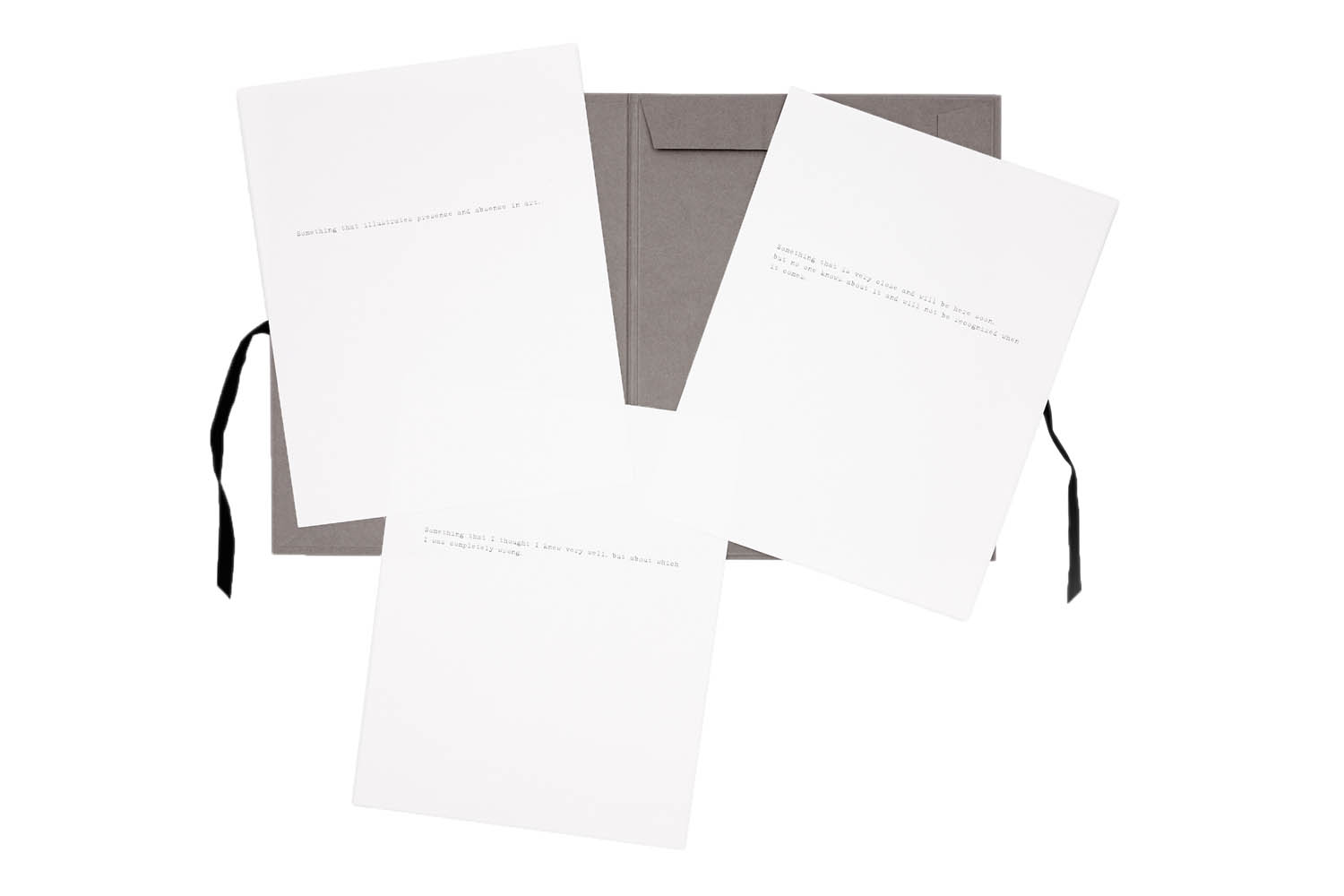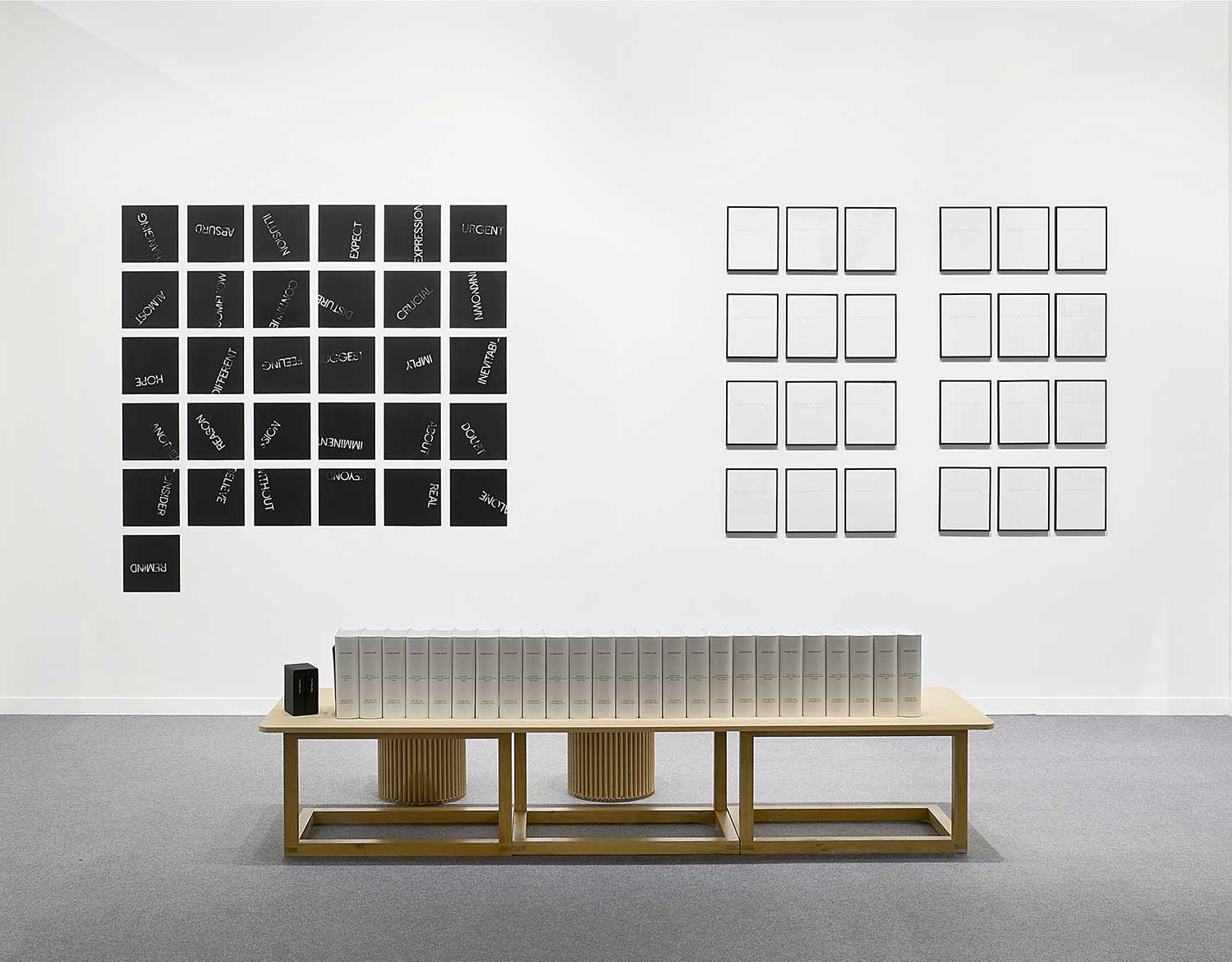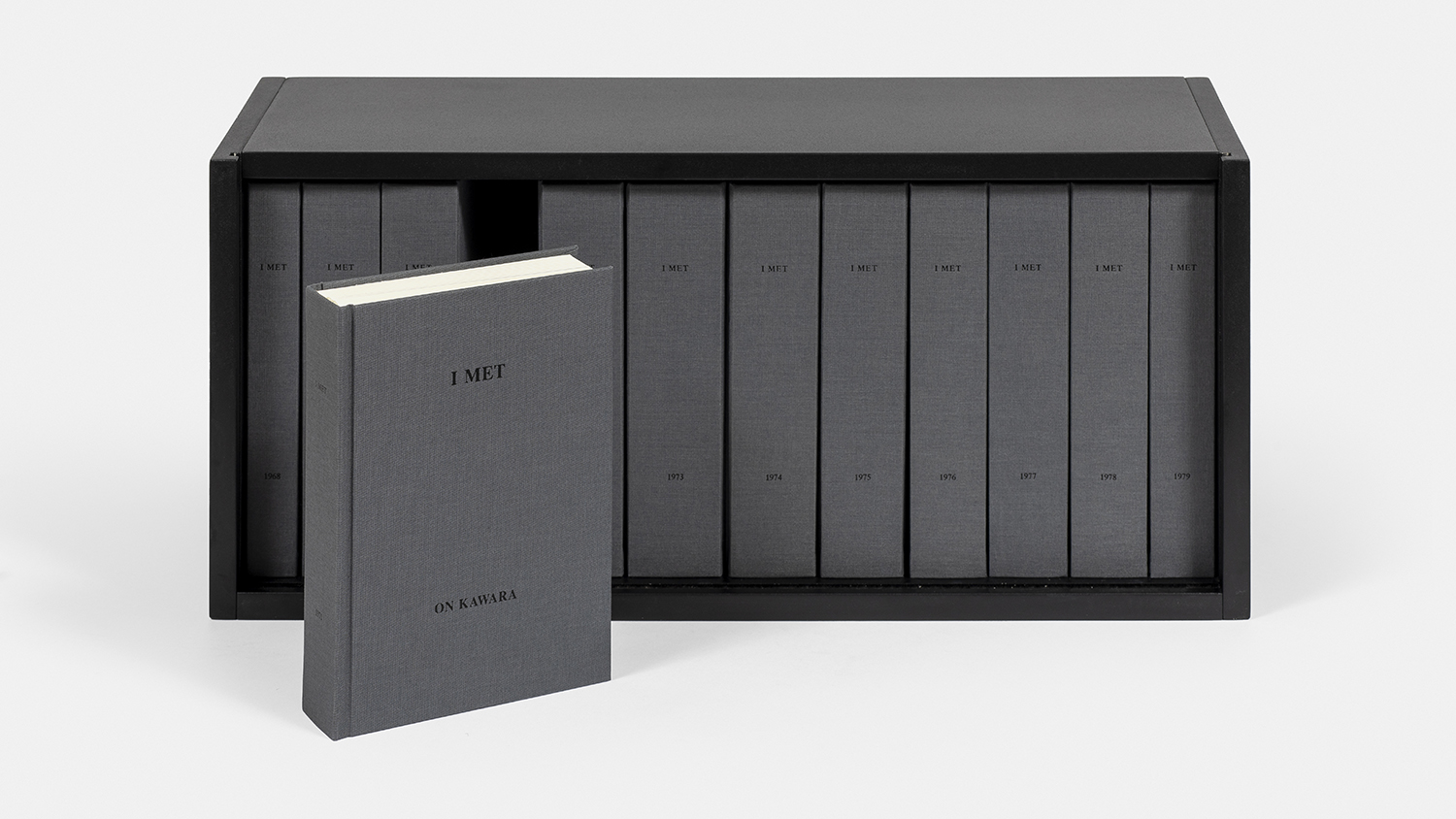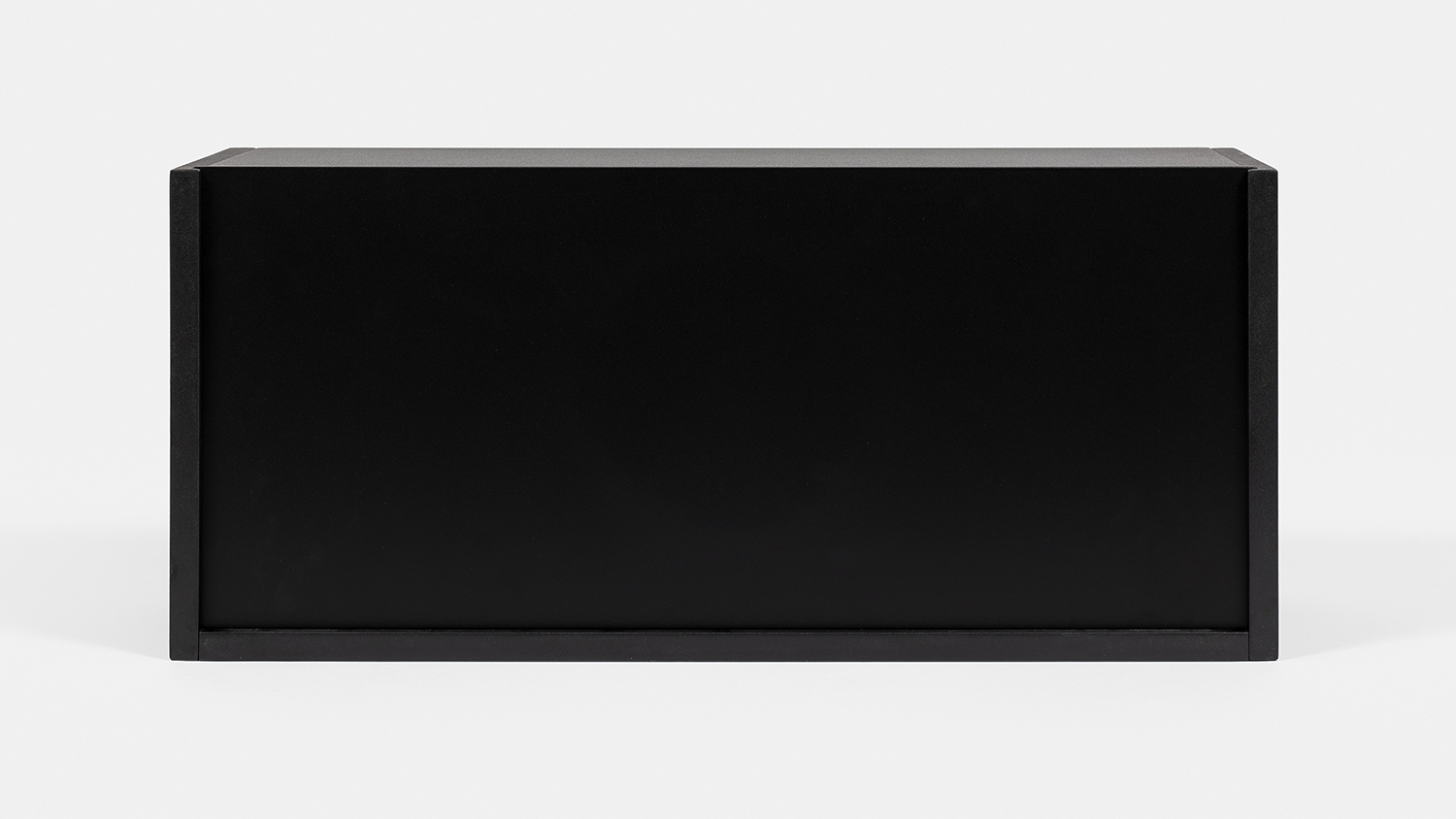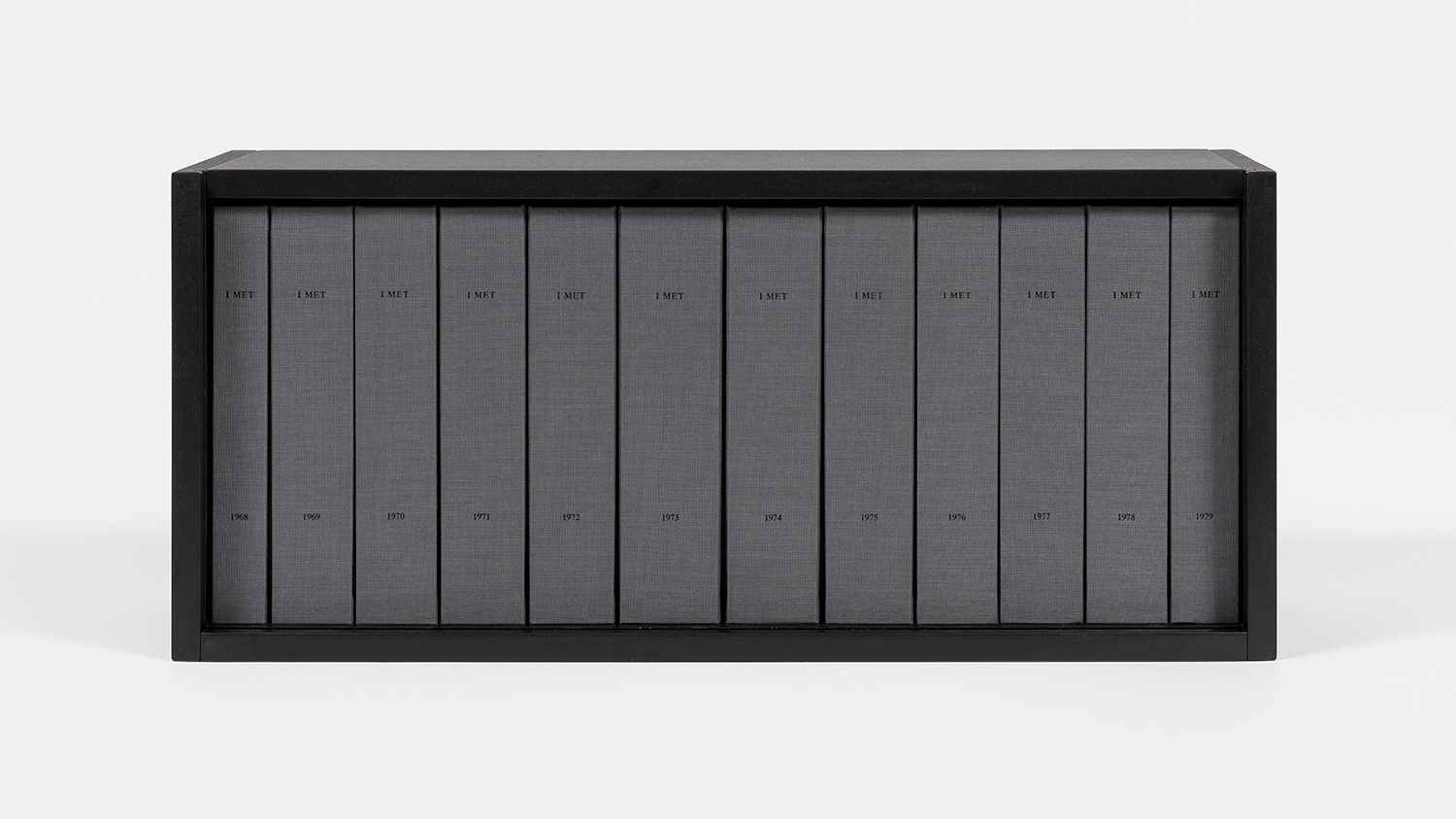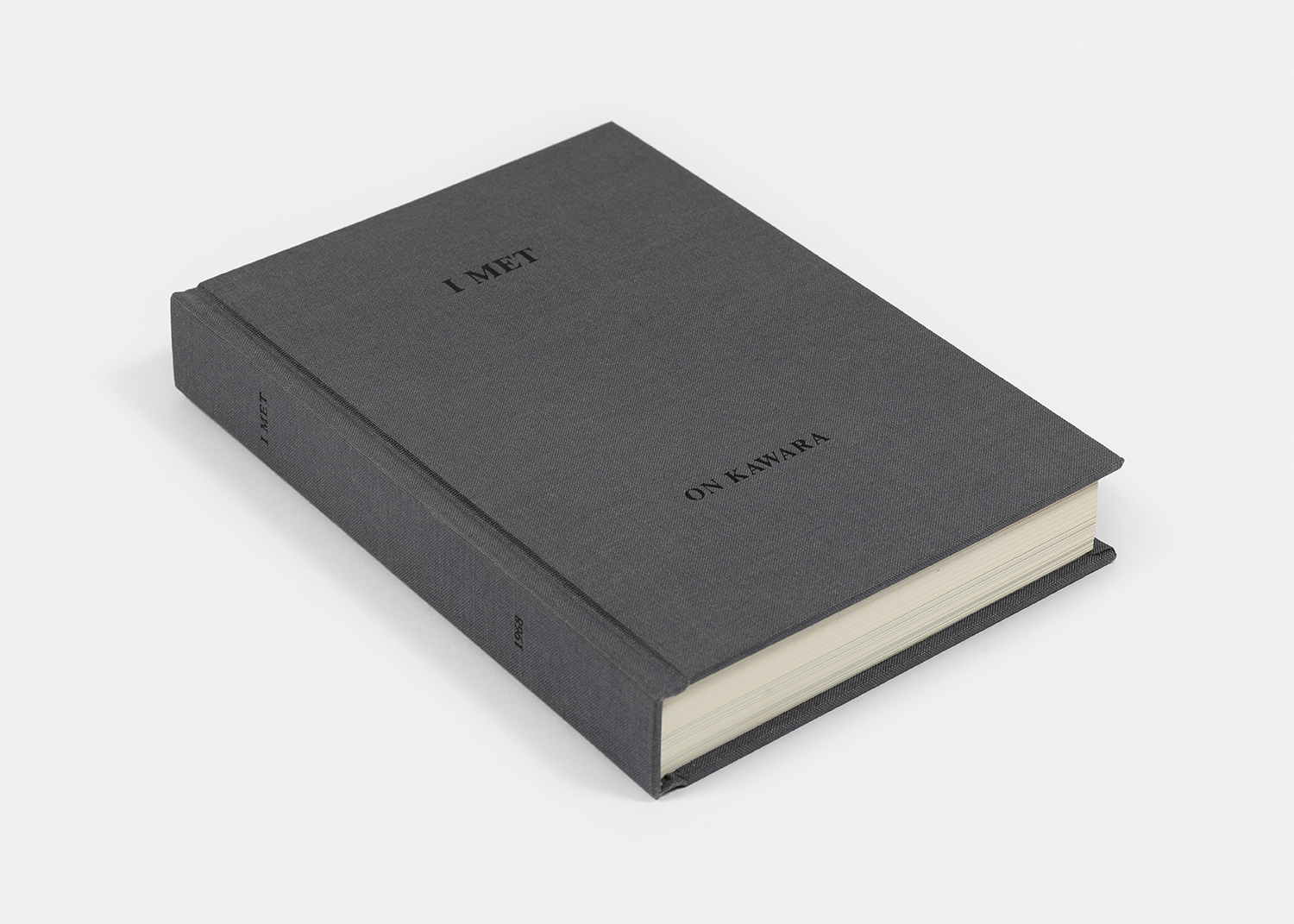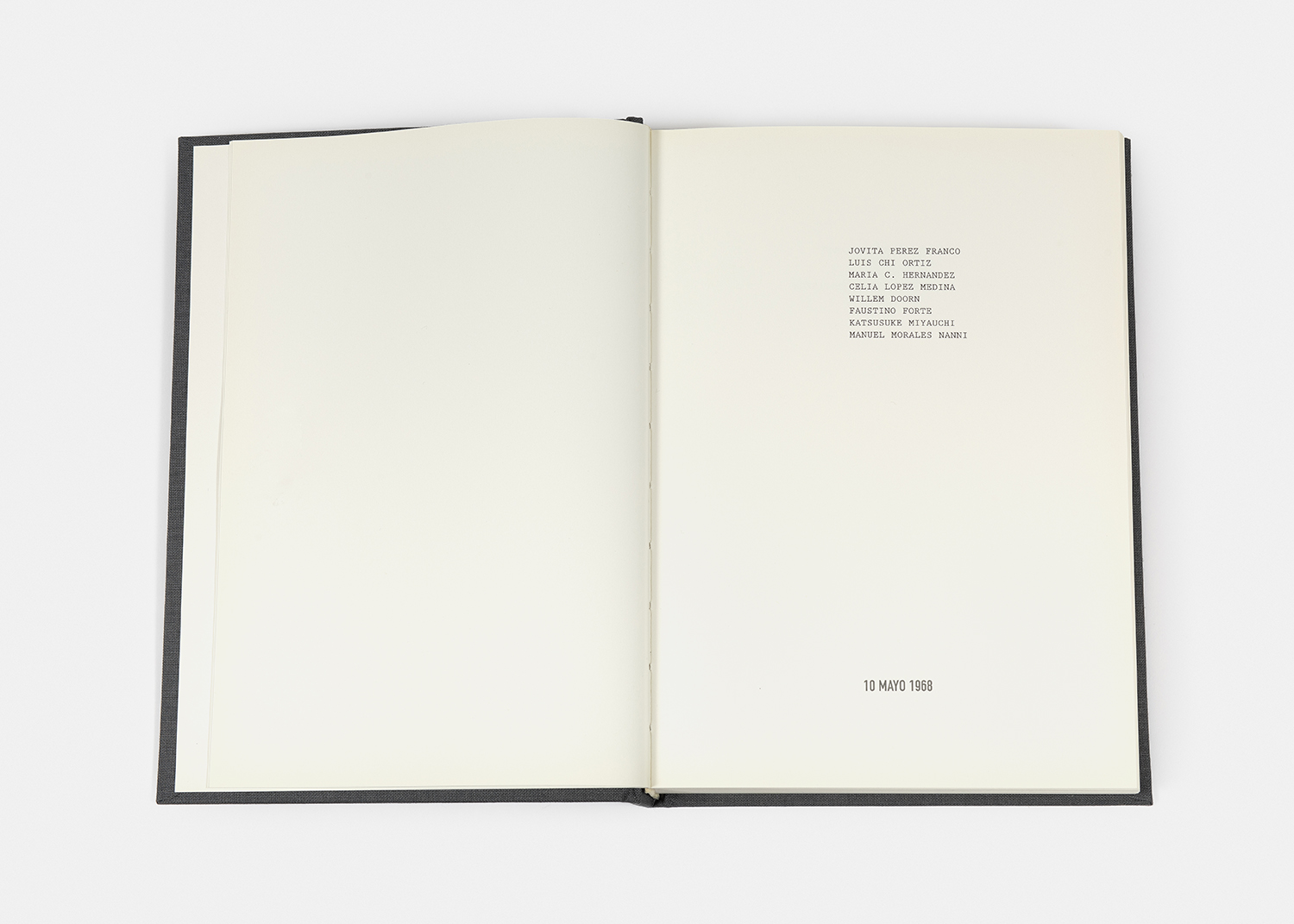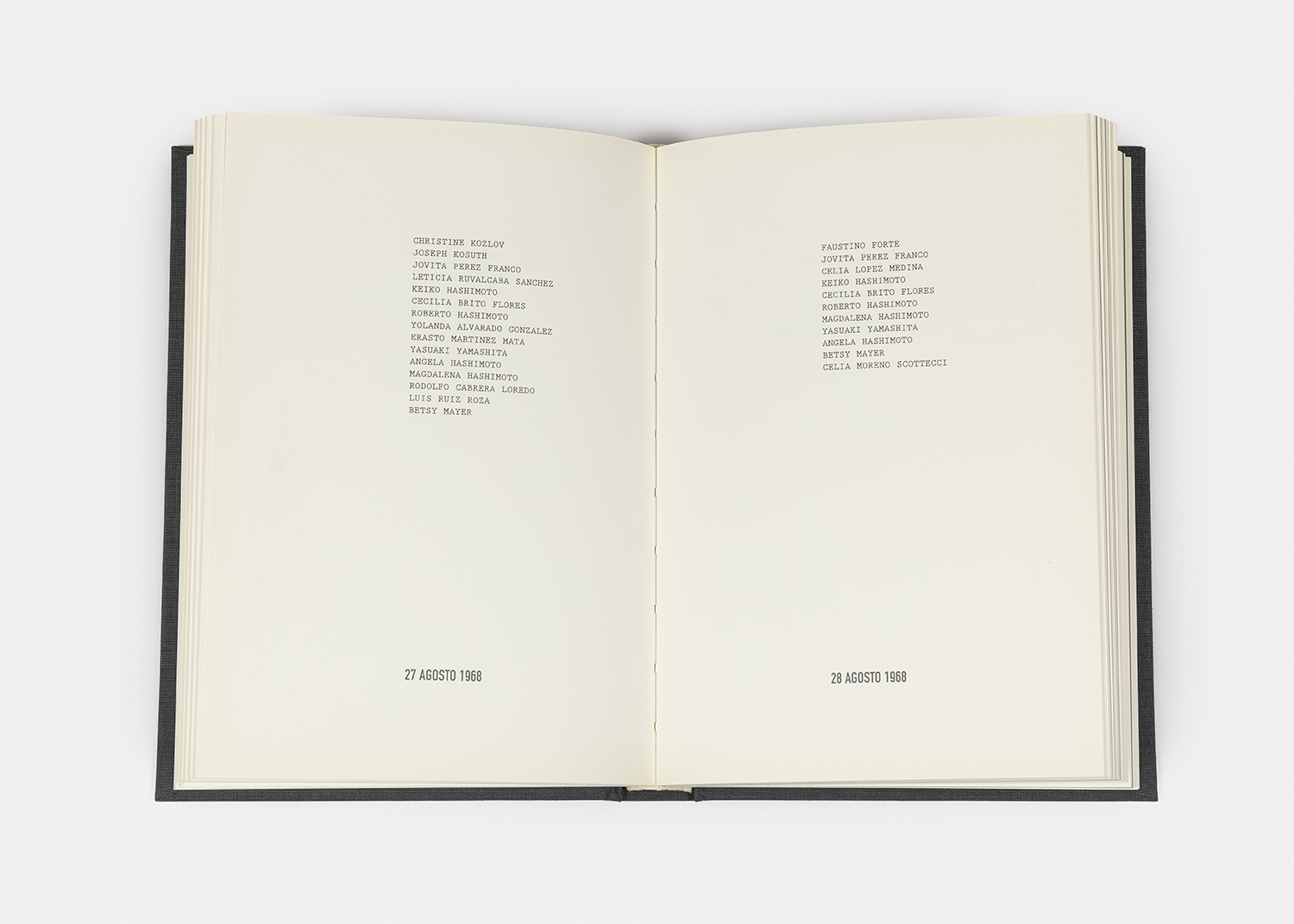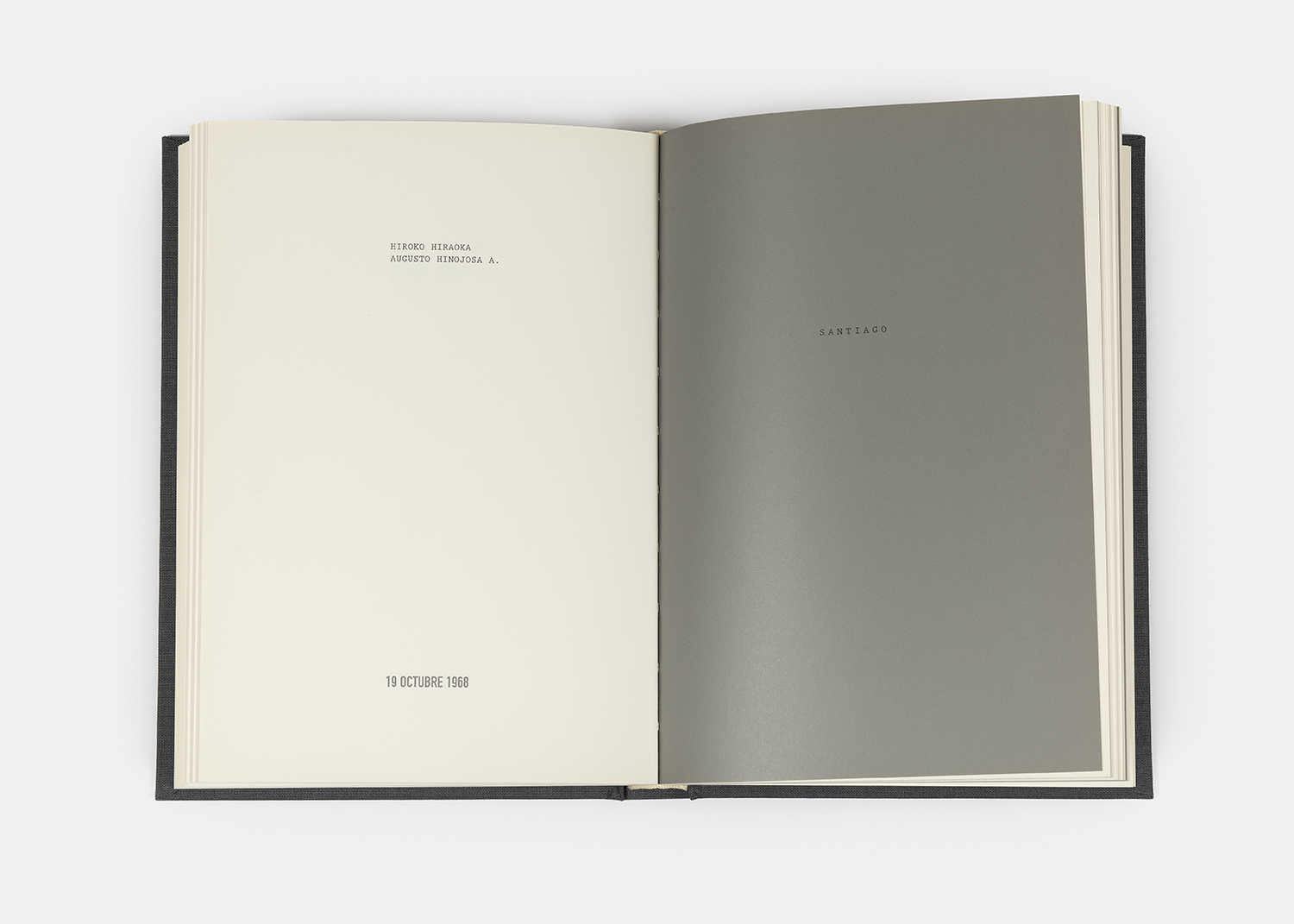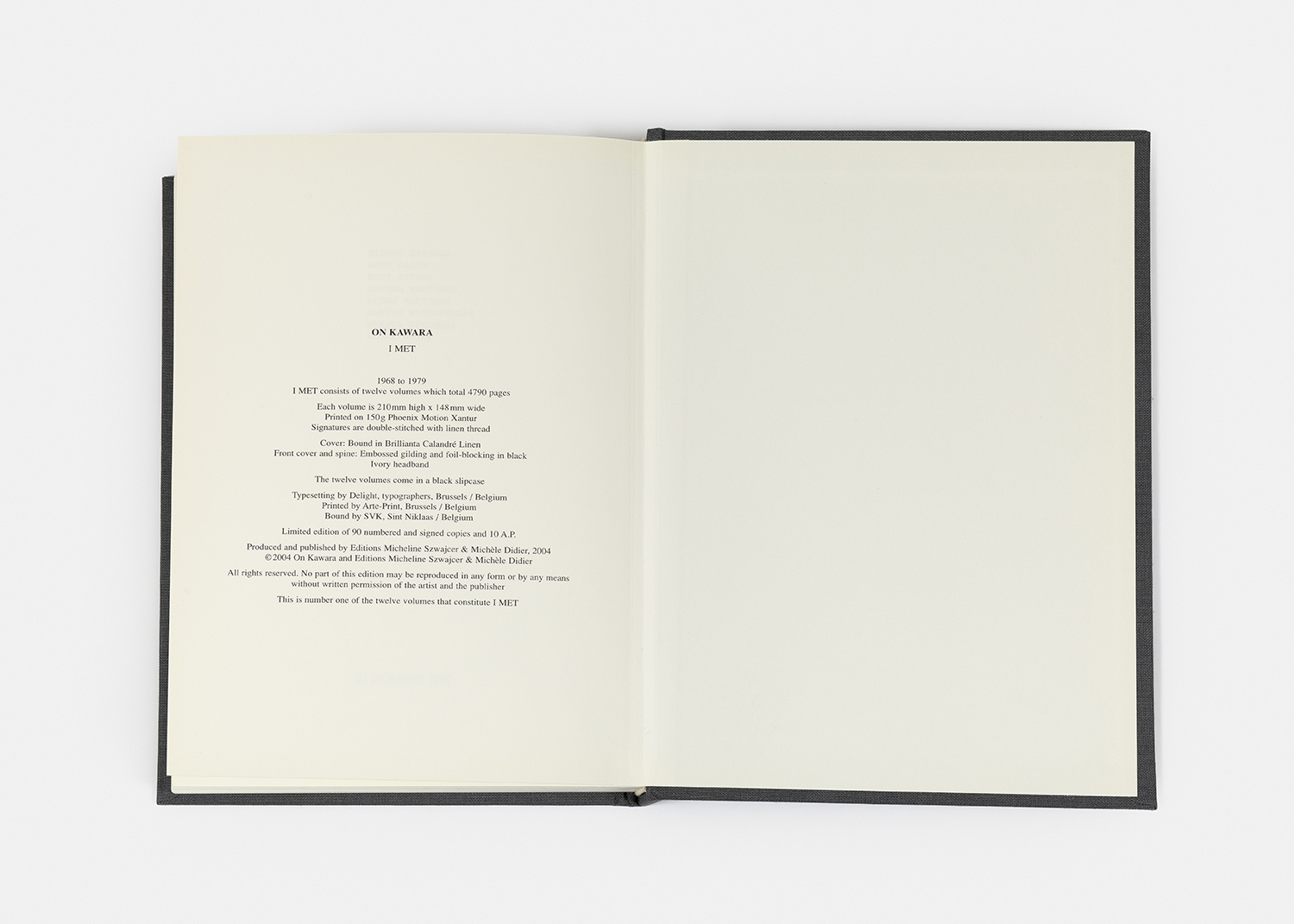Robert Barry, Mel Bochner, Ludovic Chemarin©, On Kawara, Maurizio Nannucci - Art Basel - Art fairmfc-michèle didier | Paris - Brussels -
ART BASEL 2018
June 14-17, 2018
Basel, Switzerland
With works by Robert Barry, Mel Bochner, On Kawara, Maurizio Nannucci and Ludovic Chemarin©, mfc-michèle didier pays tribute to these five conceptual and post-conceptual artists for whom art is essentially rooted in writing and language.
Mel Bochner said in 1969 that ?language is not transparent?, so let?s read!
Singer Notes, 1968 by Mel Bochner is a facsimile of the artist's original work made after a residency at Singer Laboratories in New Jersey. The Singer Notes, a collection of notes and drawings, is the result of conversations that took place between the artist and the laboratory scientists and engineers from September to December 1968. Published in three numbered and signed copies, Singer Notes, 1968 is an emblematic work that the audience of ART BASEL will enjoy to discover.
I READ is a 6-volume work by On Kawara. On both sides of each of the 3272 lined paper sheets that make up the the piece, On Kawara has meticulously pasted annotated and dated press cuttings. Pages are filled with juxtaposed or layered articles from daily newspapers. There are no apparent links between the cuttings themselves besides the date on which the events related took place, meaning the dates on the selected newspapers occasionally differ slightly from the one written on the top of the page belonging to I READ. Each sheet corresponds to a day when On Kawara completed a Date Painting. However I READ is not a ?daily work? like the artist?s other pieces I GOT UP, I WENT, I MET, which will also be shown on mfc-michèle didier?s booth. Begun in 1966 and drawn to a close in 1995, I READ stakes claim to a certain strictness or routine that is not solely linked to the ?day? itself but rather records events and places linked to Date Paintings of the Today Series by the artist. Therefore, On Kawara allows us to glimpse at his own way of reading: today we can read what he used to read.
The famous 2-volume set One Million Years by On Kawara produced by mfc-michèle didier will also be displayed: each page of the work is composed of ten columns subdivided into five blocks of 100 years, which are then divided into ten lines, thus each representing a decade.
The installation of On Kawara?s Trilogy (I GOT UP, I WENT, I MET) will also invite viewers to a ?reading? of the works. For the first time, the 36 volumes will be presented open on the wall of the booth: I GOT UP (a series of postcards systematically stamped with ?I Got Up at?? followed by the time at which On Kawara got up), I WENT (a red line traced on a map recording the daily trips of the artist) and I MET (a list of names of people the artist met and with whom he had a conversation).
With Somethings That... Robert Barry, following his own compositional method devised in 1969, has created a collection of twenty-four sets, each made up of three parts, which respectively contain a statement. The two primary statements are repeated in each set, whereas the third is one of twenty-four possibilities, creating just as many possible combinations.The statements from Somethings that? are unique in that they never conjure up an image. Although the combinations of words hold meaning and are grammatically correct, no visual transcription arises in the reader?s mind: the thought remains textual and evolves as such.
Each card of Something in a Box proposes a different statement by Robert Barry ? 62 Statements. The first one introduces the 61 following: SOMETHING THAT ... and then 61 statements that are supposed to define SOMETHING, the essence of which remains irrevocably unknown.
On each of the 31 plates of Art Lovers unbound book two layers are superimposed: a photographic portrait taken by Robert Barry himself and a word outline cut into a black surface. The portrait is covered by the black layer and the frame of the shape of the word creates a fragmented portrait seen through a keyhole. It is up to the viewer to infer their subjects and reconstitute the portraits based on sparse and vague elements.
whichever word by Maurizio Nannucci, consisting of three neons, blue, red and yellow will be presented alongside Barry?s statements. These neons are respectively accompanied by an exhaustive anthology of all the neon texts written by the artist since 1967.
mfc-michèle didier invites you to read or read again, either standing up or comfortably seated in one of the armchairs of the Salon©, an installation conceived by Ludovic Chemarin©. This area dedicated to the act of reading allows viewers to peruse the documentation regarding Ludovic Chemarin© in order to discover this radical conceptual project and the subversive nature of its legal implications.
ART BASEL 2018
June 14-17, 2018
Basel, Switzerland
With works by Robert Barry, Mel Bochner, On Kawara, Maurizio Nannucci and Ludovic Chemarin©, mfc-michèle didier pays tribute to these five conceptual and post-conceptual artists for whom art is essentially rooted in writing and language.
Mel Bochner said in 1969 that ?language is not transparent?, so let?s read!
Singer Notes, 1968 by Mel Bochner is a facsimile of the artist's original work made after a residency at Singer Laboratories in New Jersey. The Singer Notes, a collection of notes and drawings, is the result of conversations that took place between the artist and the laboratory scientists and engineers from September to December 1968. Published in three numbered and signed copies, Singer Notes, 1968 is an emblematic work that the audience of ART BASEL will enjoy to discover.
I READ is a 6-volume work by On Kawara. On both sides of each of the 3272 lined paper sheets that make up the the piece, On Kawara has meticulously pasted annotated and dated press cuttings. Pages are filled with juxtaposed or layered articles from daily newspapers. There are no apparent links between the cuttings themselves besides the date on which the events related took place, meaning the dates on the selected newspapers occasionally differ slightly from the one written on the top of the page belonging to I READ. Each sheet corresponds to a day when On Kawara completed a Date Painting. However I READ is not a ?daily work? like the artist?s other pieces I GOT UP, I WENT, I MET, which will also be shown on mfc-michèle didier?s booth. Begun in 1966 and drawn to a close in 1995, I READ stakes claim to a certain strictness or routine that is not solely linked to the ?day? itself but rather records events and places linked to Date Paintings of the Today Series by the artist. Therefore, On Kawara allows us to glimpse at his own way of reading: today we can read what he used to read.
The famous 2-volume set One Million Years by On Kawara produced by mfc-michèle didier will also be displayed: each page of the work is composed of ten columns subdivided into five blocks of 100 years, which are then divided into ten lines, thus each representing a decade.
The installation of On Kawara?s Trilogy (I GOT UP, I WENT, I MET) will also invite viewers to a ?reading? of the works. For the first time, the 36 volumes will be presented open on the wall of the booth: I GOT UP (a series of postcards systematically stamped with ?I Got Up at?? followed by the time at which On Kawara got up), I WENT (a red line traced on a map recording the daily trips of the artist) and I MET (a list of names of people the artist met and with whom he had a conversation).
With Somethings That... Robert Barry, following his own compositional method devised in 1969, has created a collection of twenty-four sets, each made up of three parts, which respectively contain a statement. The two primary statements are repeated in each set, whereas the third is one of twenty-four possibilities, creating just as many possible combinations.The statements from Somethings that? are unique in that they never conjure up an image. Although the combinations of words hold meaning and are grammatically correct, no visual transcription arises in the reader?s mind: the thought remains textual and evolves as such.
Each card of Something in a Box proposes a different statement by Robert Barry ? 62 Statements. The first one introduces the 61 following: SOMETHING THAT ... and then 61 statements that are supposed to define SOMETHING, the essence of which remains irrevocably unknown.
On each of the 31 plates of Art Lovers unbound book two layers are superimposed: a photographic portrait taken by Robert Barry himself and a word outline cut into a black surface. The portrait is covered by the black layer and the frame of the shape of the word creates a fragmented portrait seen through a keyhole. It is up to the viewer to infer their subjects and reconstitute the portraits based on sparse and vague elements.
whichever word by Maurizio Nannucci, consisting of three neons, blue, red and yellow will be presented alongside Barry?s statements. These neons are respectively accompanied by an exhaustive anthology of all the neon texts written by the artist since 1967.
mfc-michèle didier invites you to read or read again, either standing up or comfortably seated in one of the armchairs of the Salon©, an installation conceived by Ludovic Chemarin©. This area dedicated to the act of reading allows viewers to peruse the documentation regarding Ludovic Chemarin© in order to discover this radical conceptual project and the subversive nature of its legal implications.
Exposed artworks
Book, 132 pages
9.84 x 7.87 x 0.39 in ( 25,8 x 20,5 x 1,4 cm )
Set of three sheets of paper in its portfolio
11.02 x 8.27 in ( 28 x 21,5 x 0,6 cm )
